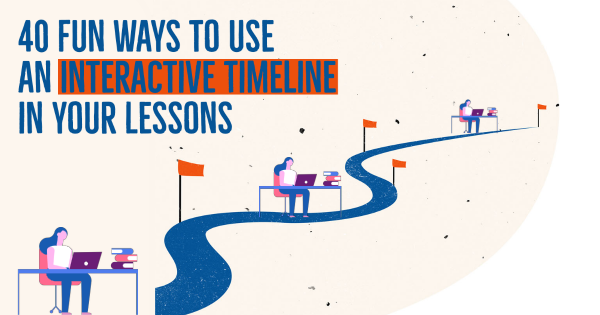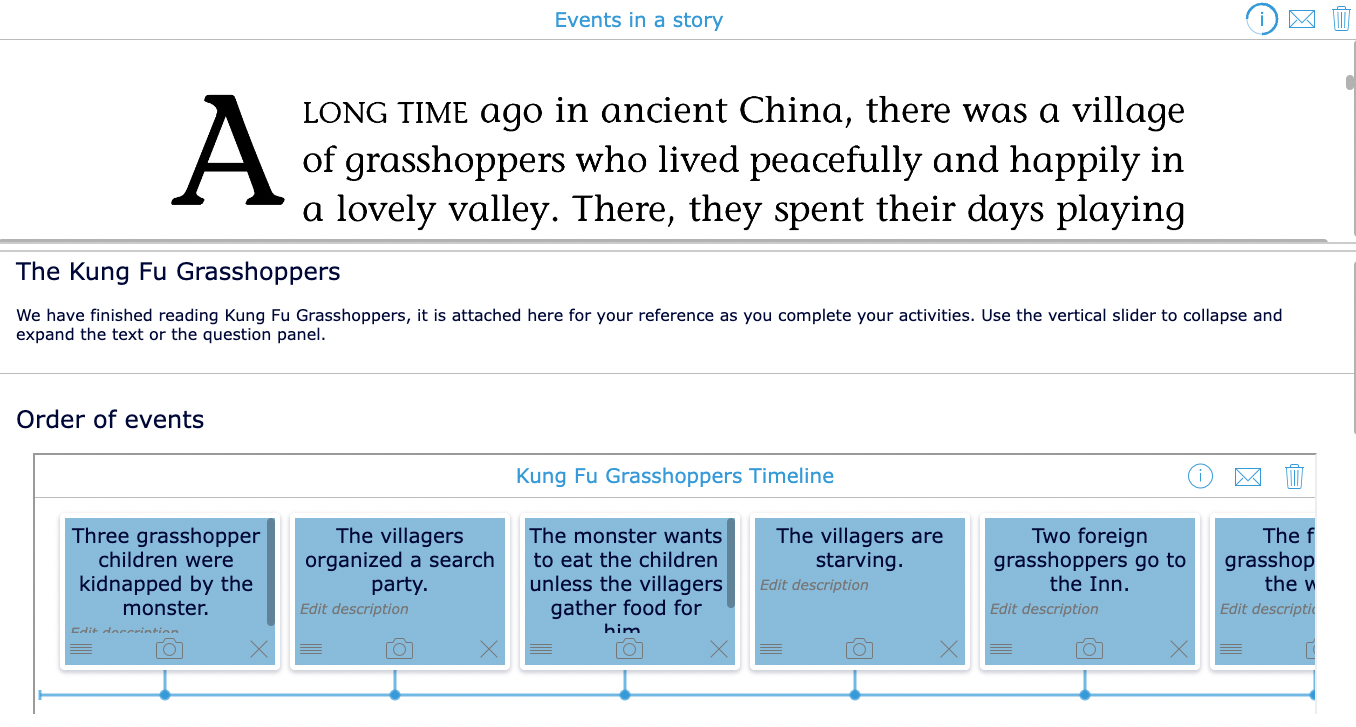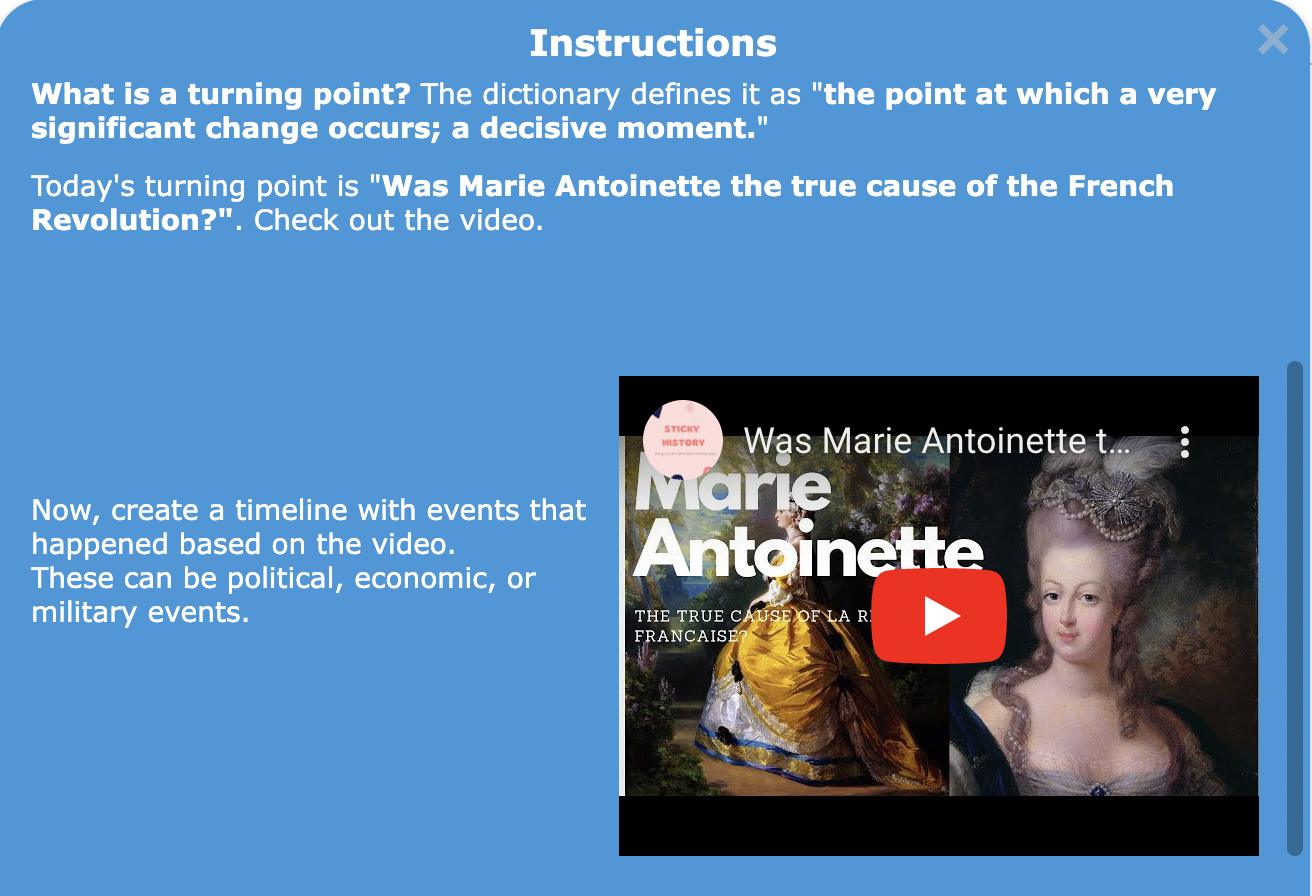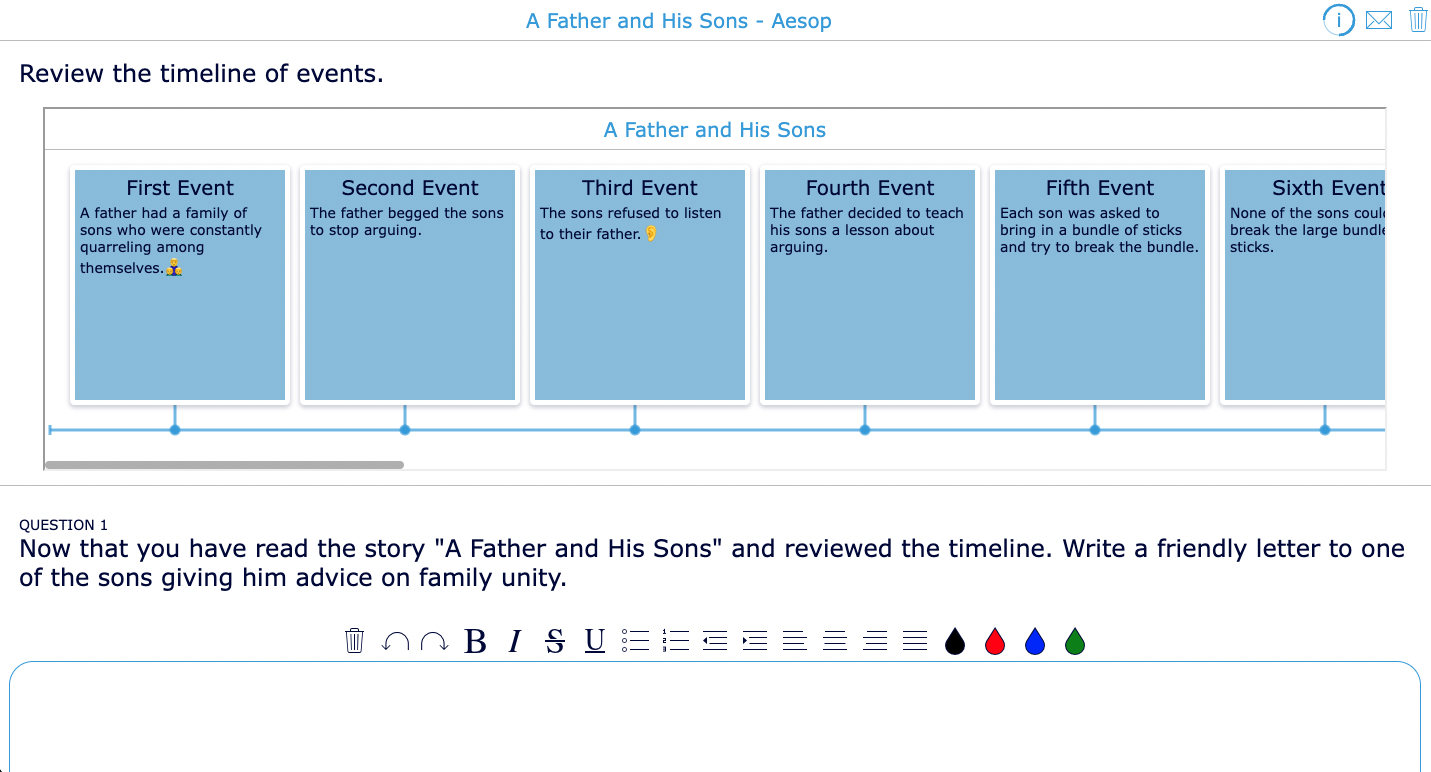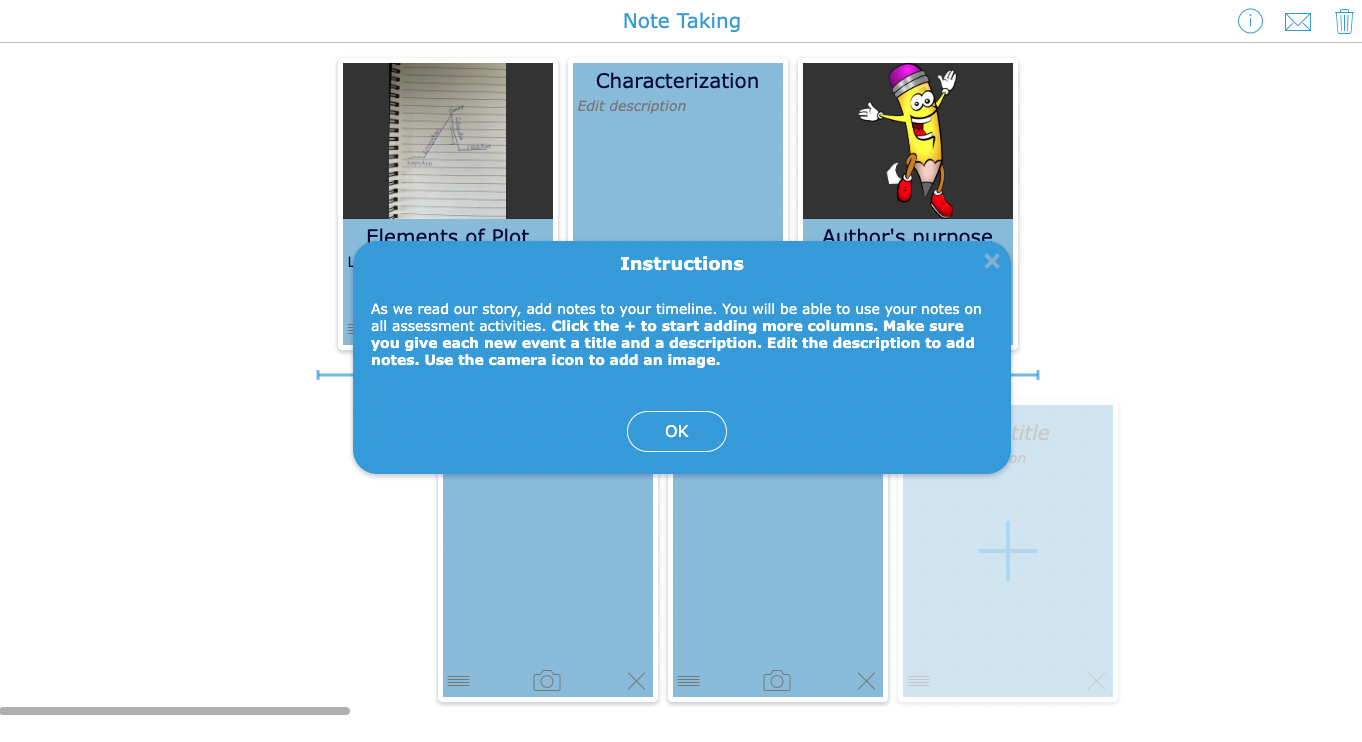40 Fun Ways to Use an Interactive Timeline in your Lessons
 Sheryl Place —
Sheryl Place —
I remember creating timelines in school. These exercises usually involved creating timelines of my life, of others’ lives, of historical events. Each timeline was created in the same manner. To complete the exercise, I used a sheet of graph paper or maybe craft paper, drew a horizontal line with interval markings to show the time, era, or events, then labeled each line. I wasn’t very creative the templates available to me weren’t very helpful either. Let’s take a look at all the ways that we can change up that idea of a timeline and create some engaging digital timelines!
In this blog post, I will provide some pedagogy and ideas for using and creating interactive timelines. I will also provide tips for preparing engaging lessons using timelines. I have brought together 40 ways to use and create an interactive timeline.
There are three sections in this blog post:
- Reasons to use an interactive timeline in your lessons
- 40 fun ways to utilize interactive timelines in all content areas
- How to create an interactive timeline from scratch using BookWidgets
The interactive timelines highlighted in this blog post are created with BookWidgets. BookWidgets is a content creation and evaluation tool for teachers. One of the 40 widgets (or exercise templates) is an interactive timeline widget. Copy any of the timelines and adapt and use them in your classroom. I will explain how to create your own timeline widgets below. 👇 Now, let’s change up that old tired timeline and have our students think critically, dig deeper and demonstrate understanding with a new take on this time-honored classroom activity.
Reasons to use an interactive timeline in your lessons
There are varying reasons why we might want to use timelines in class. If we take a look at Norman Webb’s Depth of Knowledge Levels we can see four distinct areas where timelines may be useful. This Edmentum blog post by Matt Strader provides a great overview of Webb’s DOK. Using this information, we can easily see how timelines fit into each level of rigor.
Norman Webb’s Depth of Knowledge Levels:
- Level 1. Recall and Reproduction - Recall a fact, information, or procedure 👉 You can use a timeline for quick assessment and recall. Here’s an example asking students to recall the causes of WWI.
- Level 2. Skills and Concepts - Use of information, conceptual knowledge, procedures, two or more steps, etc. 👉 You can use a digital timeline to have students demonstrate knowledge of steps, for example see this butterfly life cycle assessment.
- Level 3. Strategic Thinking- Requires reasoning, developing a plan or sequence of steps; has some complexity; more than one possible answer; generally takes less than 10 minutes to do. 👉 How about students showing complex reasoning or a variety of solutions to a problem? Here’s an example using the River Process to show strategic thinking.
- Level 4. Extended Thinking - Requires an investigation; time to think and process multiple conditions of the problem or task; and more than 10 minutes to do non-routine manipulations. 👉 An investigation, showing problems, tasks, and multiple outcomes on a timeline would be extended thinking. Here’s an example using the Balloon Car Challenge Timeline. To extend thinking on this activity, ask students what else can you do with the knowledge from this experiment? Can you use the results of this challenge to address, explain or respond to a real-world challenge, problem or situation?
As educators, of course, we create lessons at all four levels in Webb’s DOK. This is not a hierarchy to complete level 1 and navigate to level 2 and so forth. What we want to do when creating a timeline activity is ask ourselves: “What is the goal?”. Then, consider the cognitive effort that we believe a student will or should use to complete the task (DOK). I often use this backward design model when creating content and developing classroom lessons.
Then, as an educator, I ask: “What kinds of thinking do I want students to do in this specific activity?”. Where does it generally land on Webb’s DOK? Students are thinking deeply every day, so let’s use a timeline to capture their ideas and thoughts.
The BookWidgets timelines can capture student thinking at all levels of Webb’s DOK. That’s because of one powerful option: you can switch from a fixed timeline (used for mainly studying/review) to an editable timeline. The latter is used in a variety of ways mentioned above, providing students more control over the timeline exercise.
40 fun ways to use interactive timelines in any subject area
Below, you’ll find some classroom activities and lesson ideas we can enhance with a timeline. I’ve divided the timeline lesson examples so you can find the right timeline lesson ideas for your subject area or course:
Let’s get started! 👏🏼
English Language Arts/World Languages
Writing
1. End of story
Rewrite the ending of a story after reviewing the events → What would have happened if a different choice had been made at the turning point in a story? Check out this example using a split worksheet with a timeline included in the questions.
2. Point of view
Change the timeline to another person’s character point of view - how do the events change? This timeline example asks students to evaluate the French Revolution from Marie Antoinette’s point of view. How does this change in point of view affect our timeline?
3. Evaluate and advise
Evaluate a timeline to give advice to a character in a story. In this elementary example, students are asked to reflect on a fable, review the time line and then write a friendly letter.
4. Note taking
This example shows how to organize elements of a story including plot, figurative language and more.
5.Note taking continued
Continuing with note taking this organizer will help students organize notes in a World Language or ESOL/ESL class.
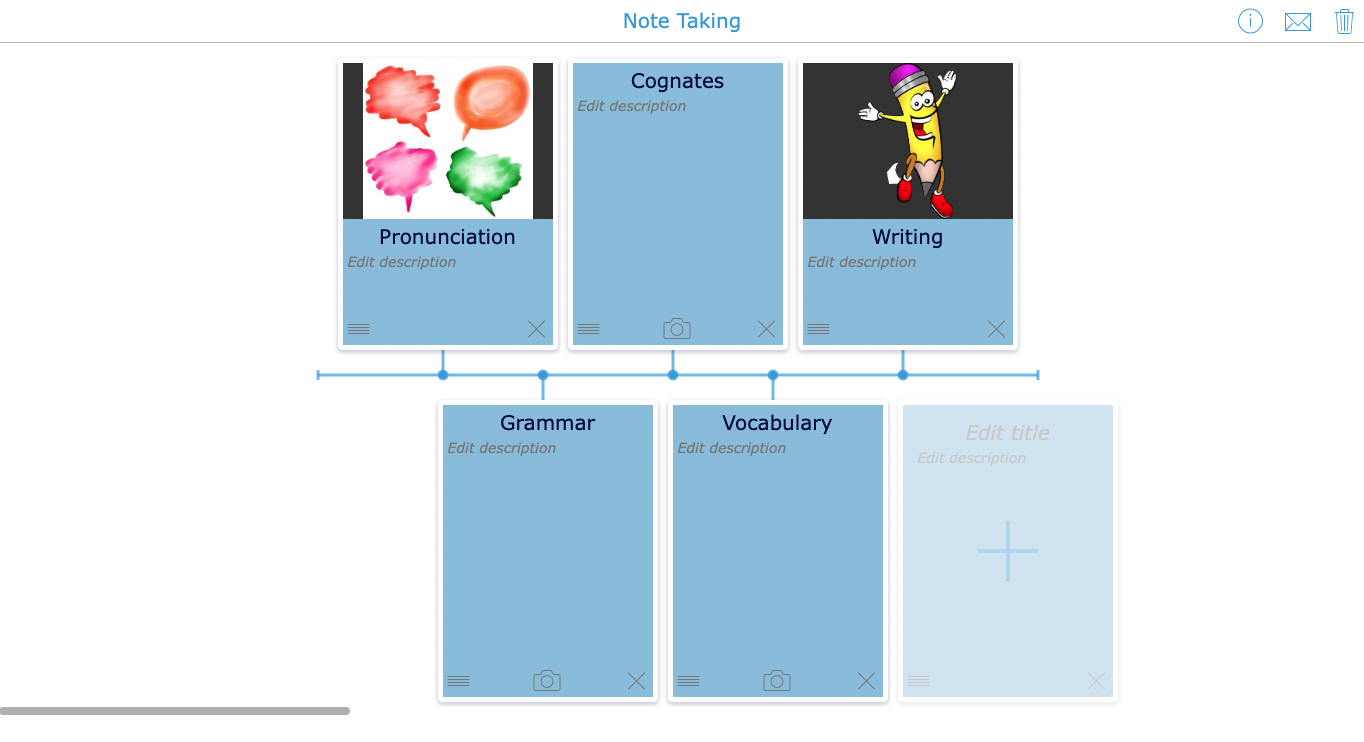
Reading
6. Understand plot
Use the elements or chronology of a story timeline to help students understand plot/theme.
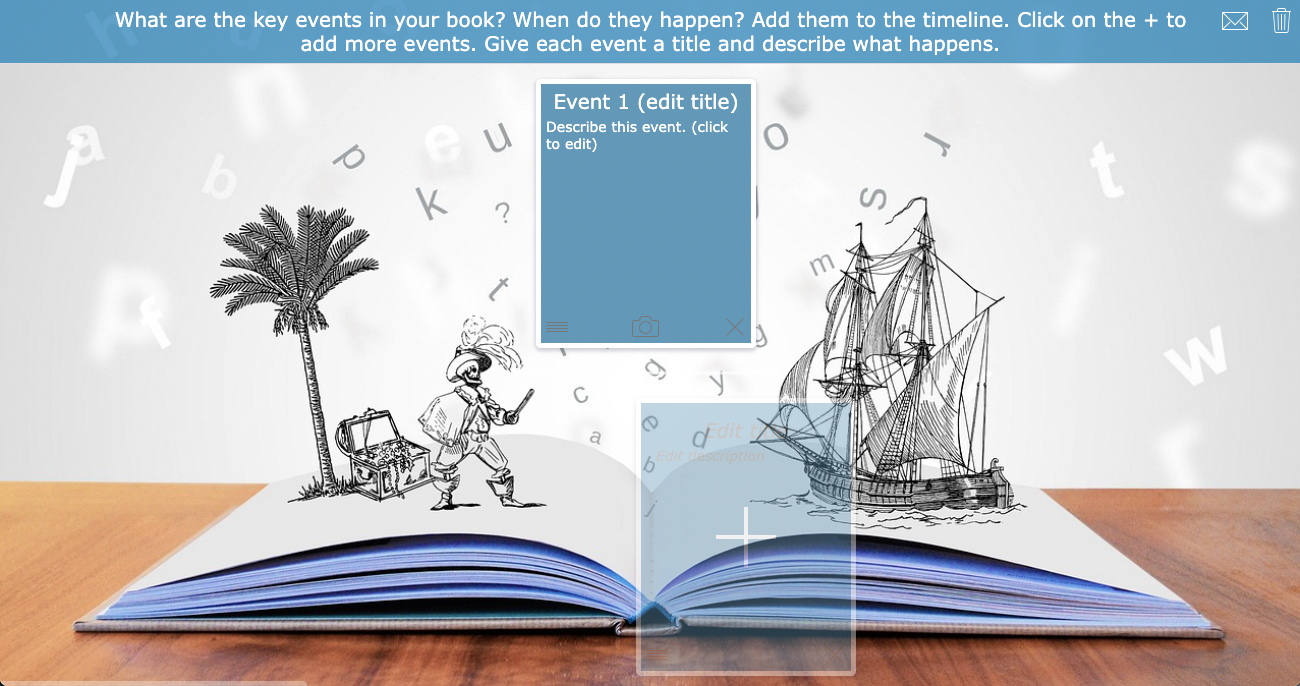
7. Sequence of events
Order the events of a story chronologically. This example asks students to place the events from Edgar Allan Poe’s classic, “The Masque of the Red Death” in chronological order.
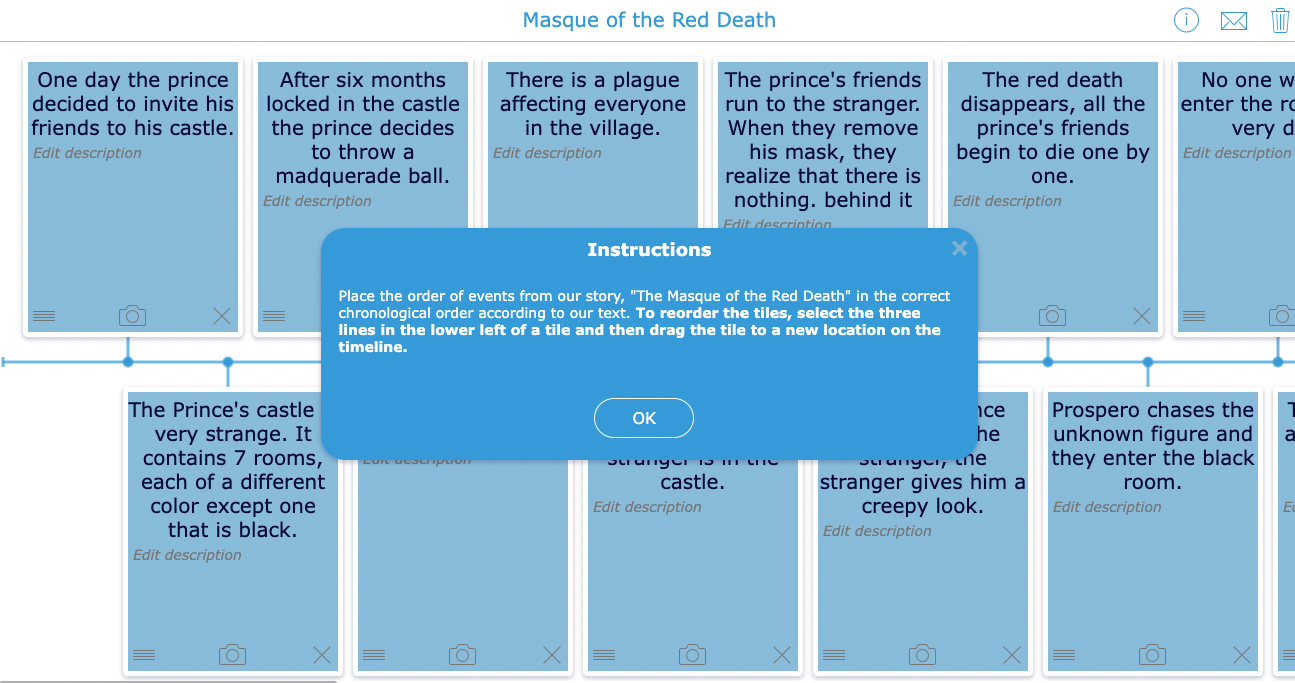
Knowledge
8. Visual timeline
Create a picture timeline with no words - or limit on words: This example asks students to reflect on the story Where the Red Fern Grows to precisely recall events using only images.
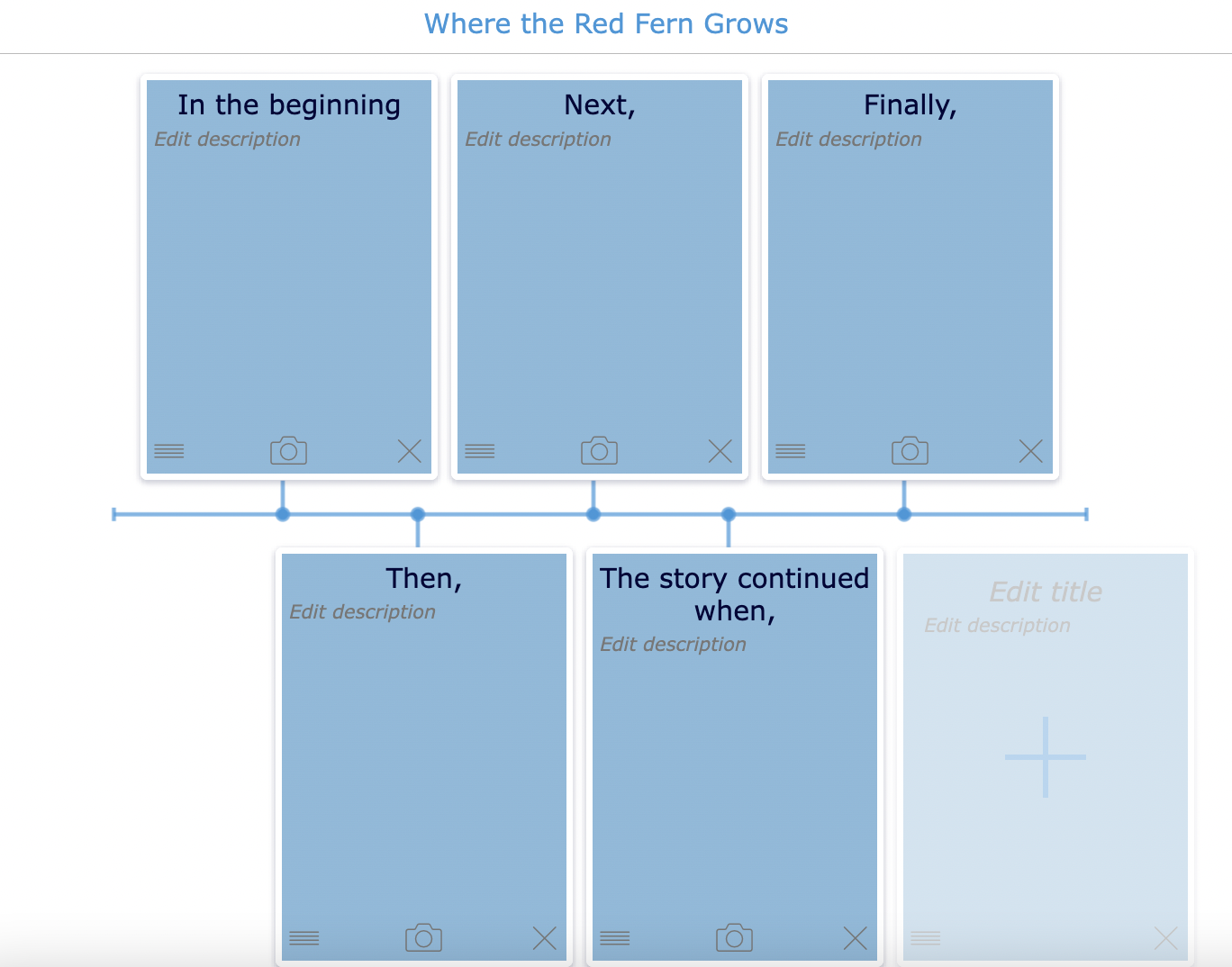
9. Image story
Change up vocabulary practice and review by using a creative fixed timeline.
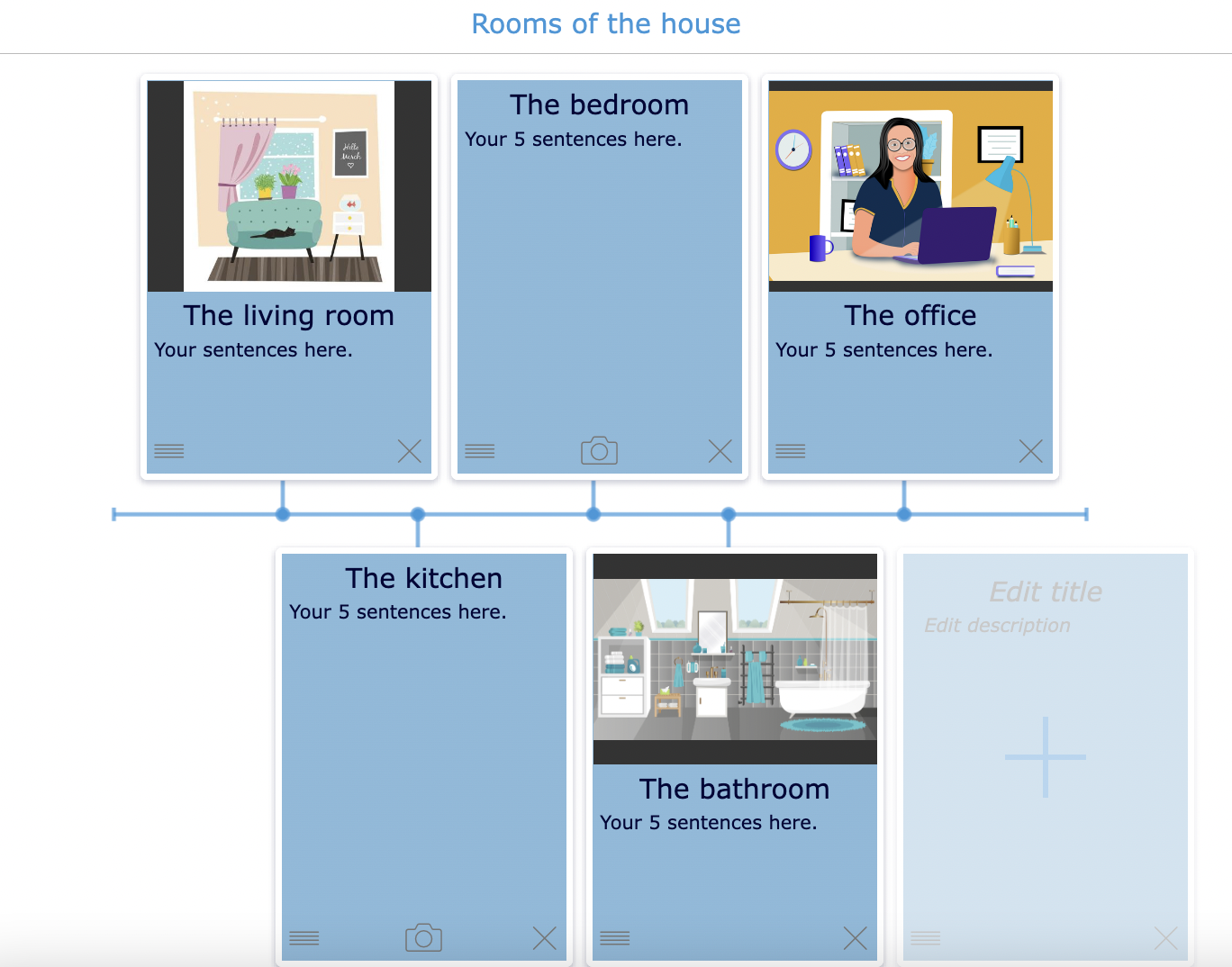
History/Social Sciences
10. Compare and contrast
Compare and contrast two timelines to identify commonalities and differences in events or across a timeline. For this example we have asked students to research both the Spanish Influenza outbreak of 1918 and compare this to data from the COVID pandemic of 2019. Combined with other activities, collaboration and research this could be a great activity to add some extended thinking and level up on Webb’s DOK.
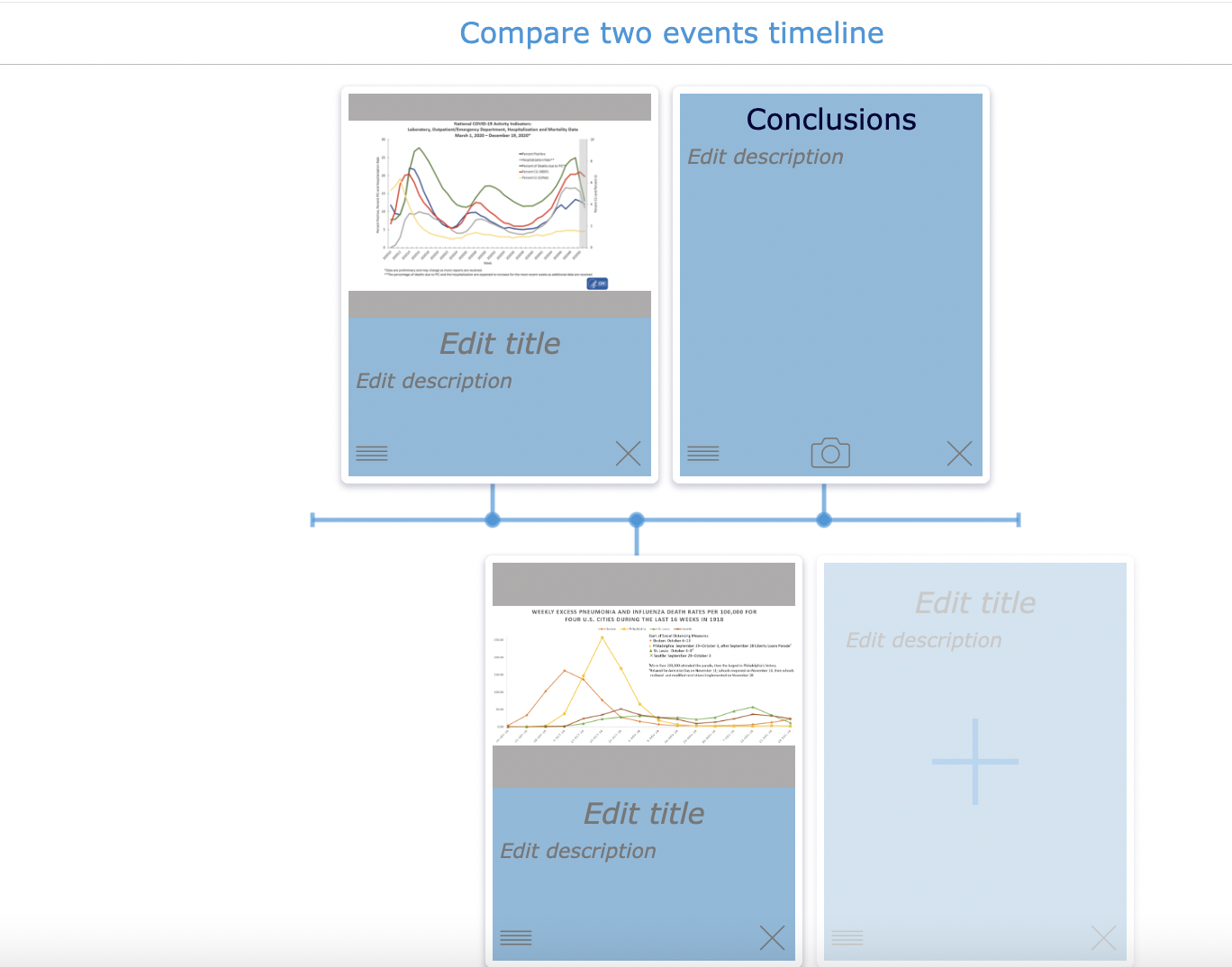
Use a timeline to make judgements (positive or negative, impact on environment, cost, social, political). This timeline of the Great Depression demonstrates how to categorize events on a timeline. Deepen thinking by extending the activity to find a real word solution to a current problem.
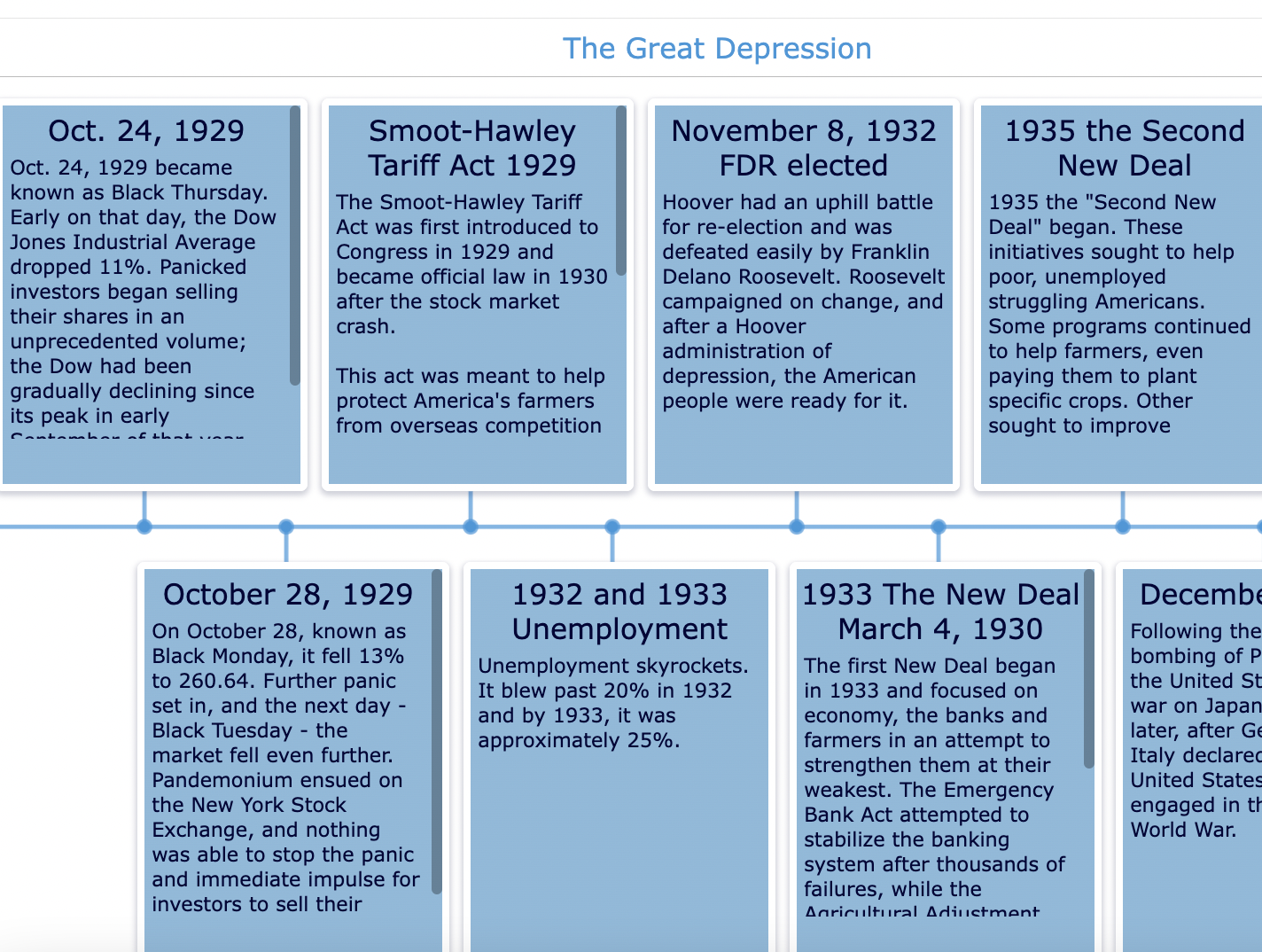
12. Predict the future
Create a timeline to predict the future: This timeline focuses on UN Sustainable Development Goal 15. Can you predict what will happen if we don’t affect change now?
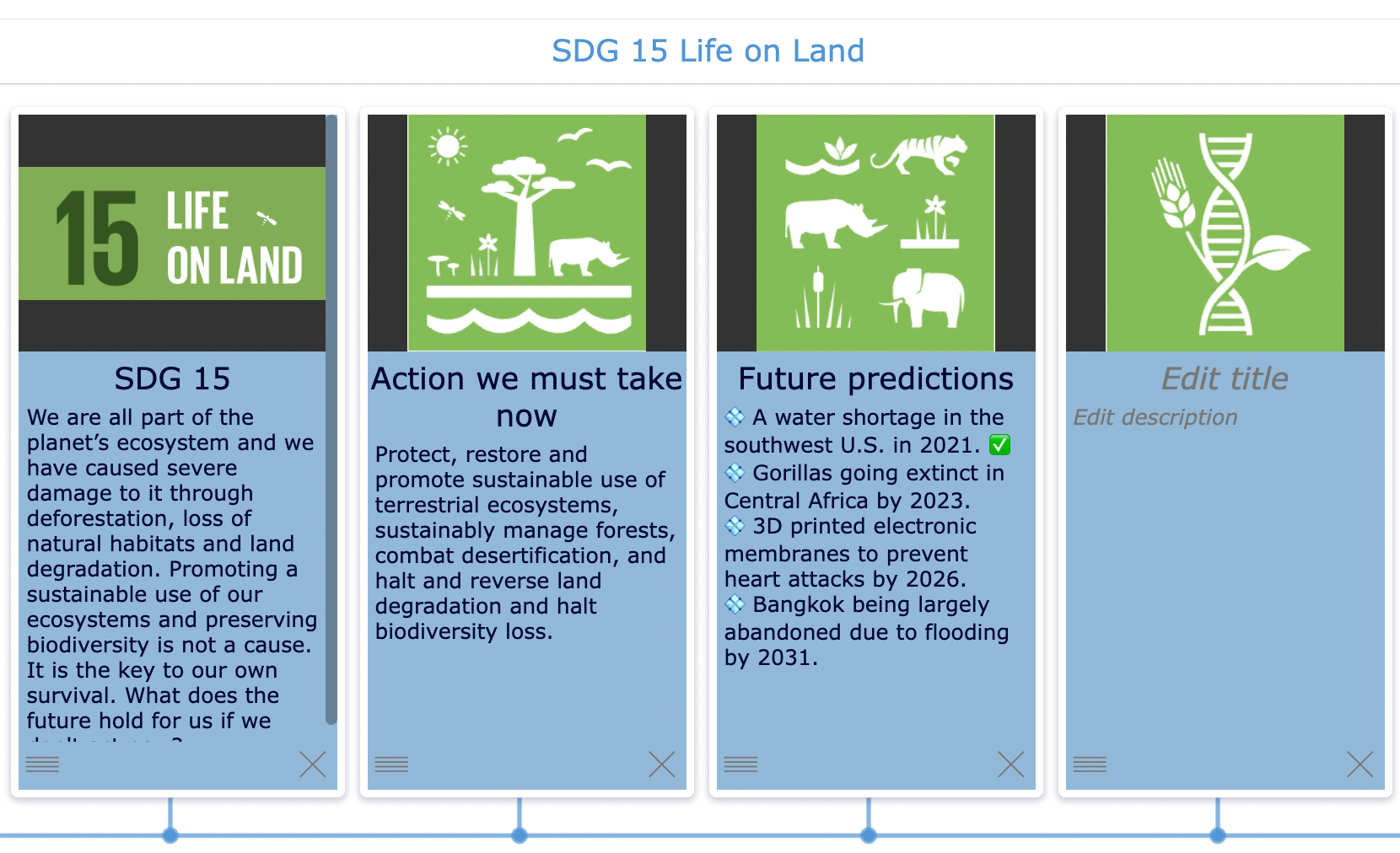
13. Turning point in history
What was the turning point in the history or an historical event? This timeline evaluates events of WWI and asks students to identify the turning point and next steps.
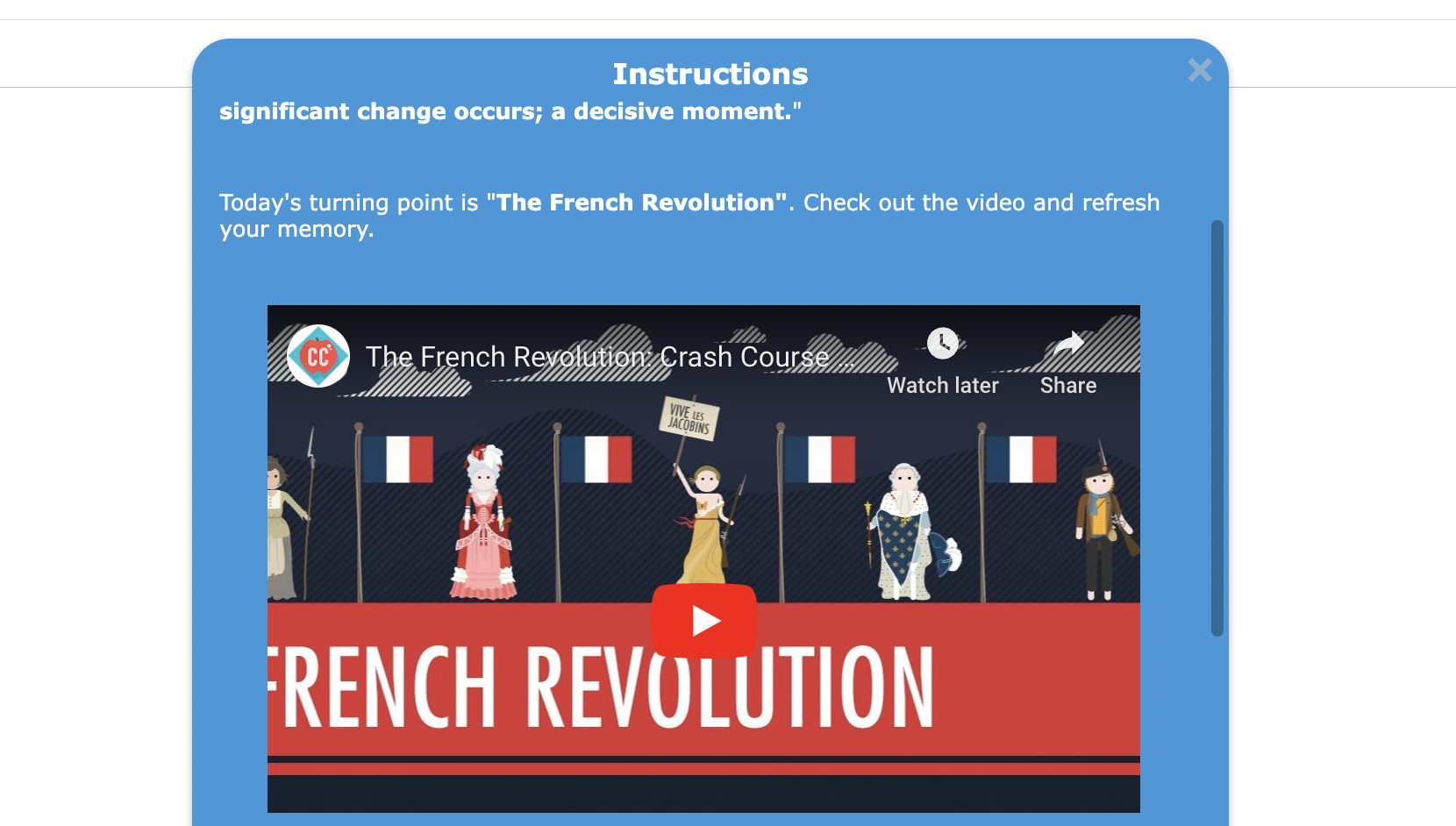
14. Highlights (or lowlights)
Create a timeline with the top highlights leading up to an event.
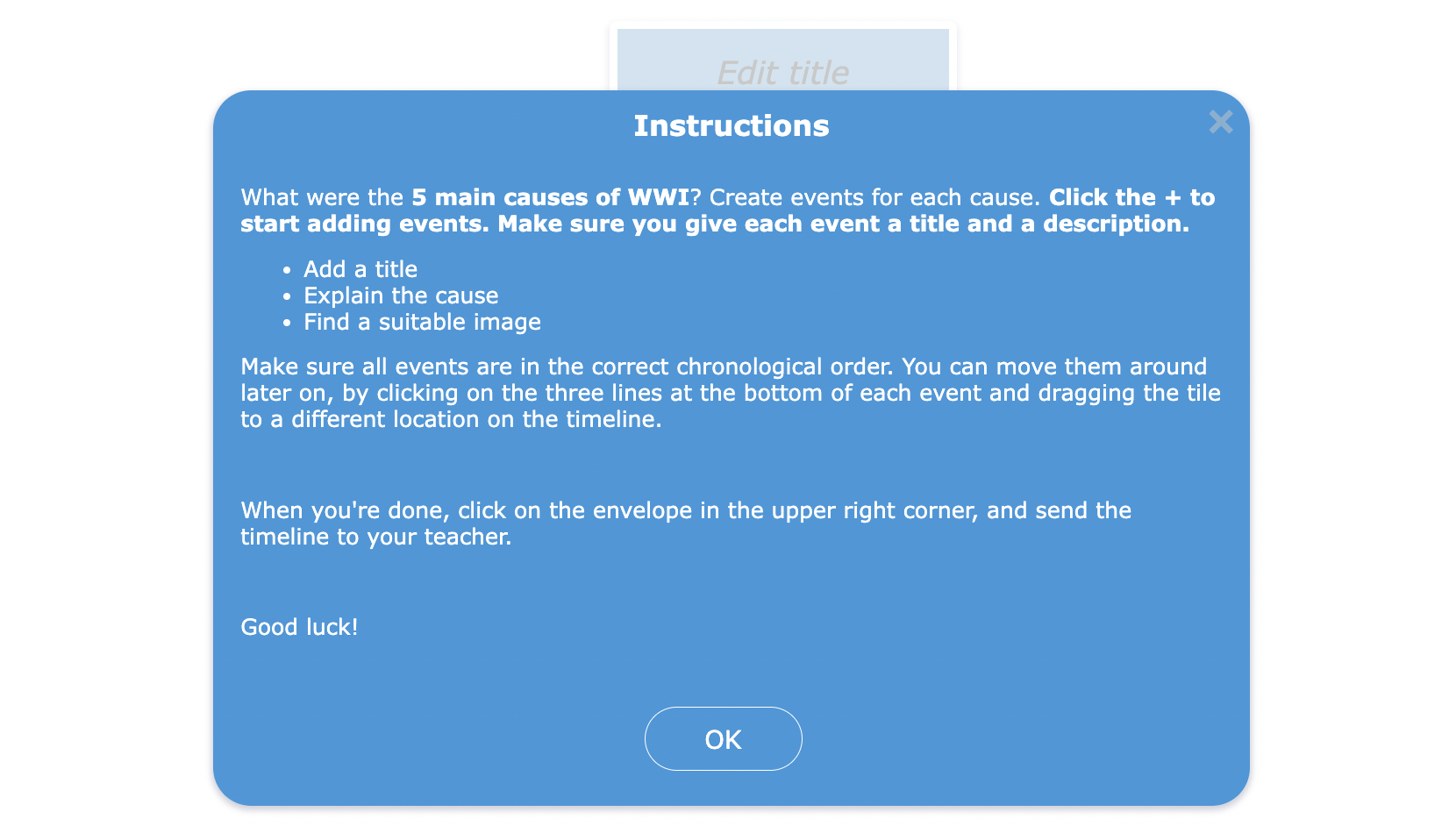
15. Sequencing of events
In this order of events timeline, students review inventions and arrange them in order of discovery, creation.
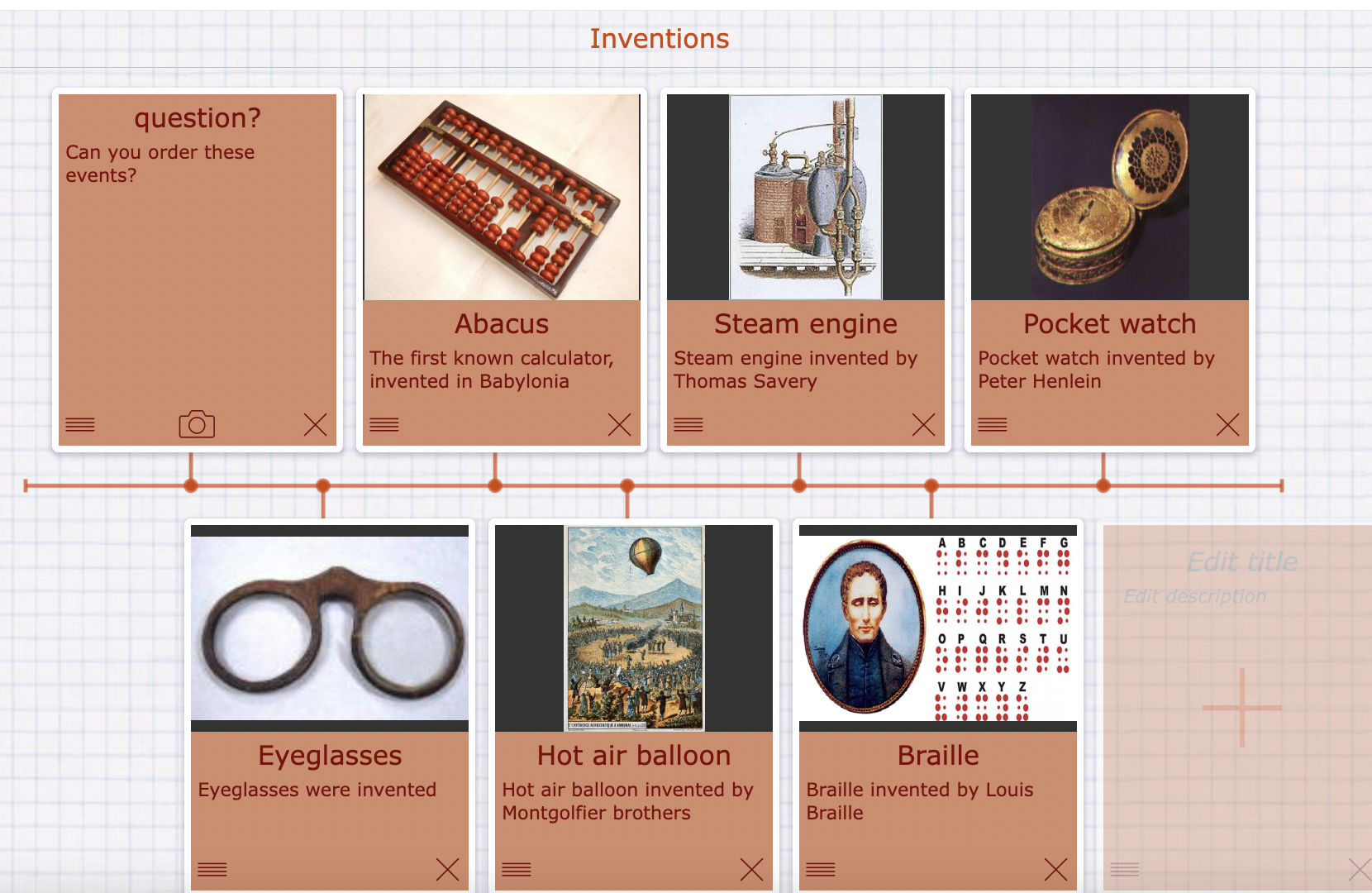
16. Historical eras
Create a timeline of significant historical eras. Here you will note how the simple historical era sorting activity has moved up a level when I ask students to research and add images.
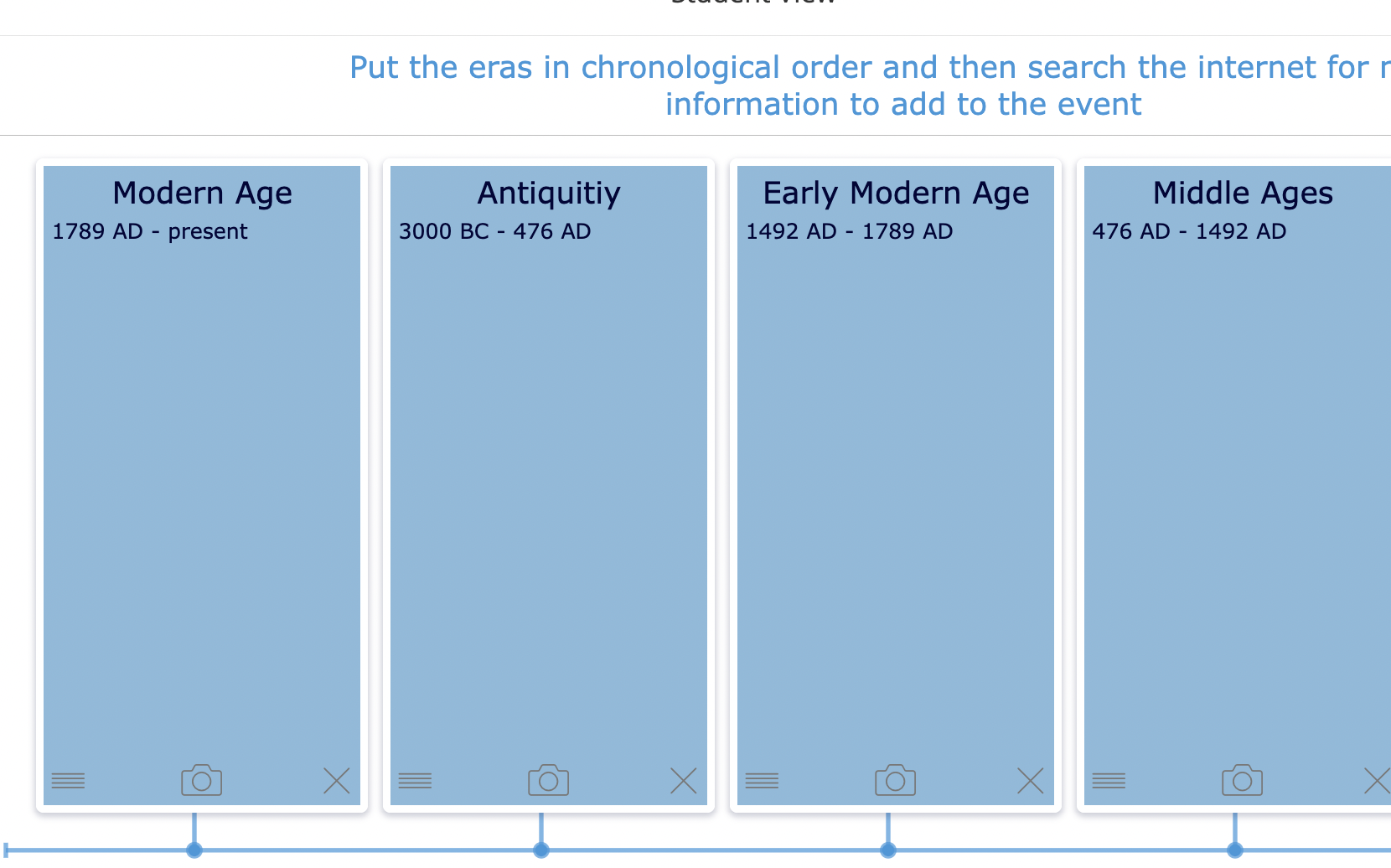
17. Changemakers timeline
Can you identify significant changemakers in history? Here is an example I created for Women’s History Month.
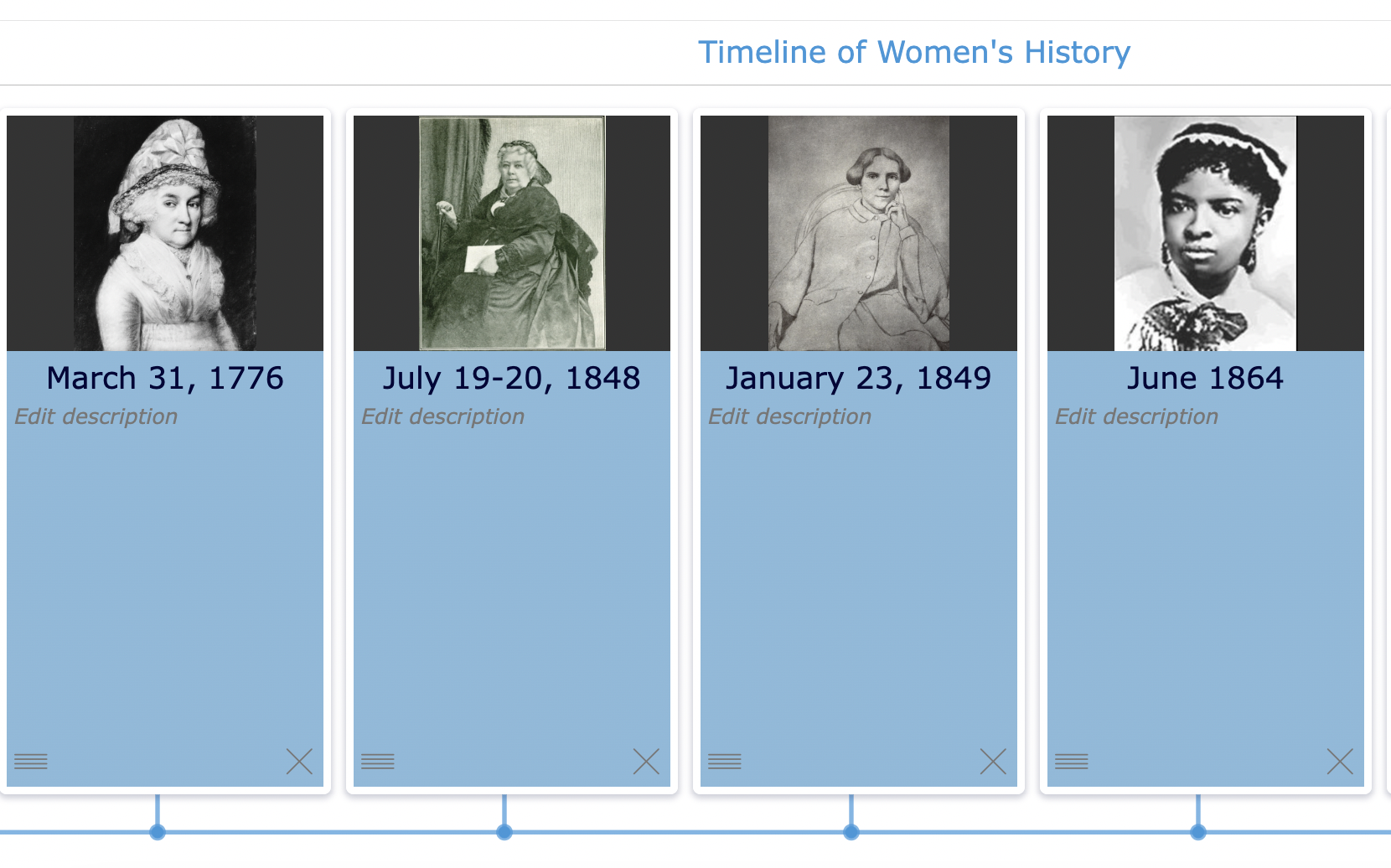
18. The life of …
Use a timeline to capture important events in the life of a famous or infamous person in history. To extend the learning, ask students to draw conclusions based on these events.

19. The history of…
Change up learning and highlight an overlooked or obscure historical event. Every subject has history, this timeline of PI will certainly make March 14 a memorable day!
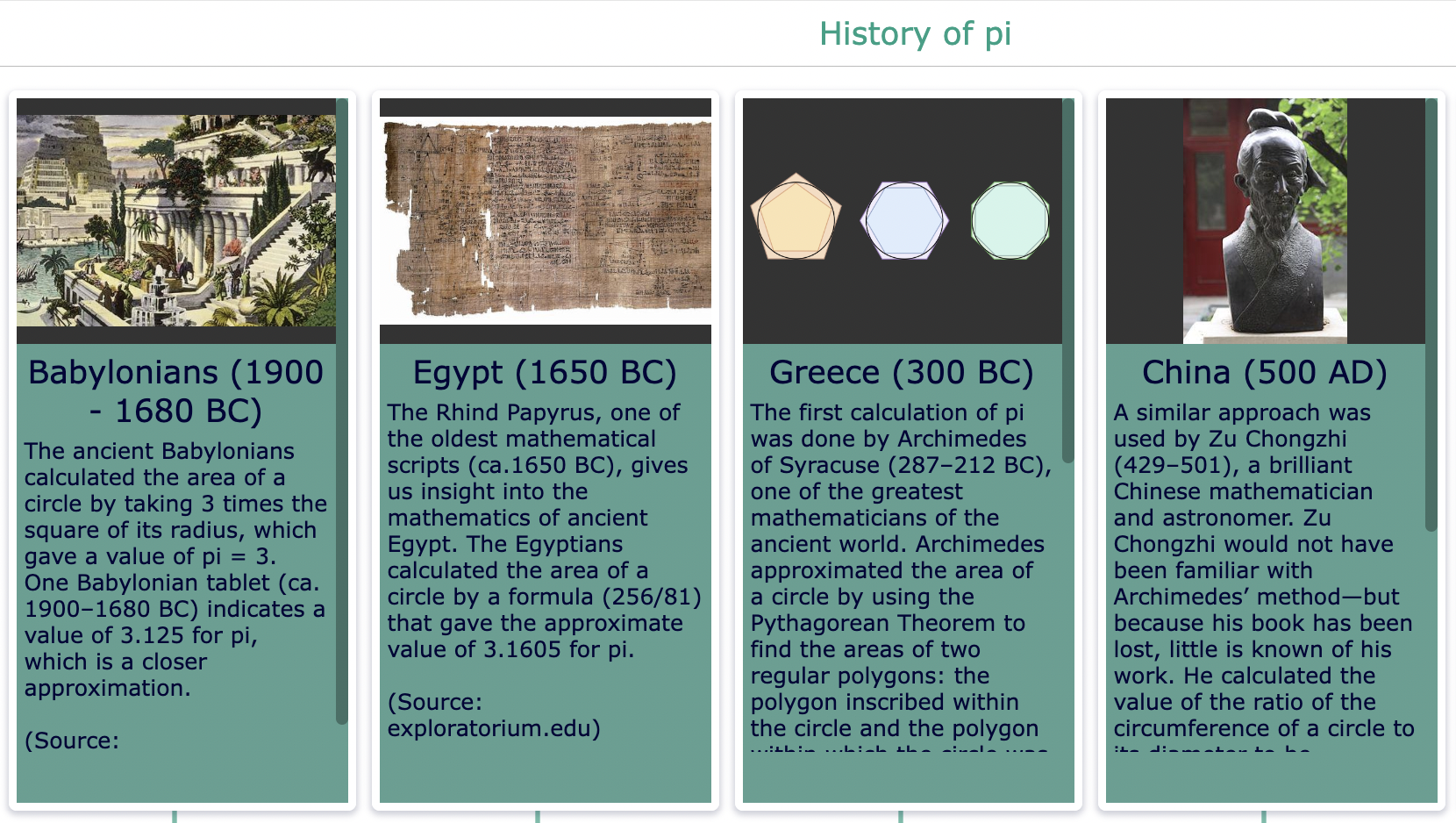
20. Chronology of events or eras
Many traditional timelines show a chronology, change yours up and go digital.
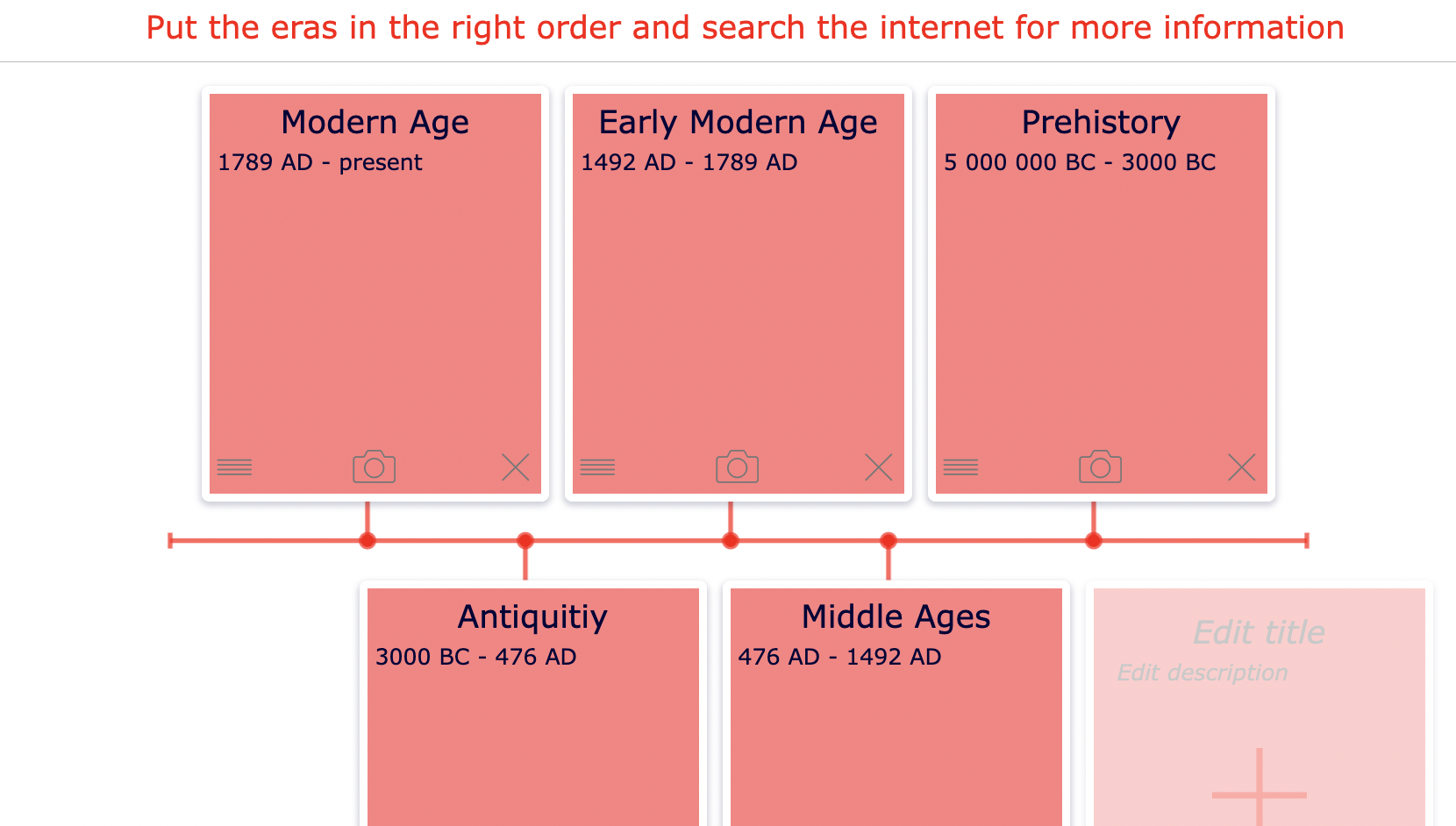
21. Rewrite an historical event
If you had the power to rewrite history, would you? Ask students to evaluate a timeline. How would they change history - or would they?
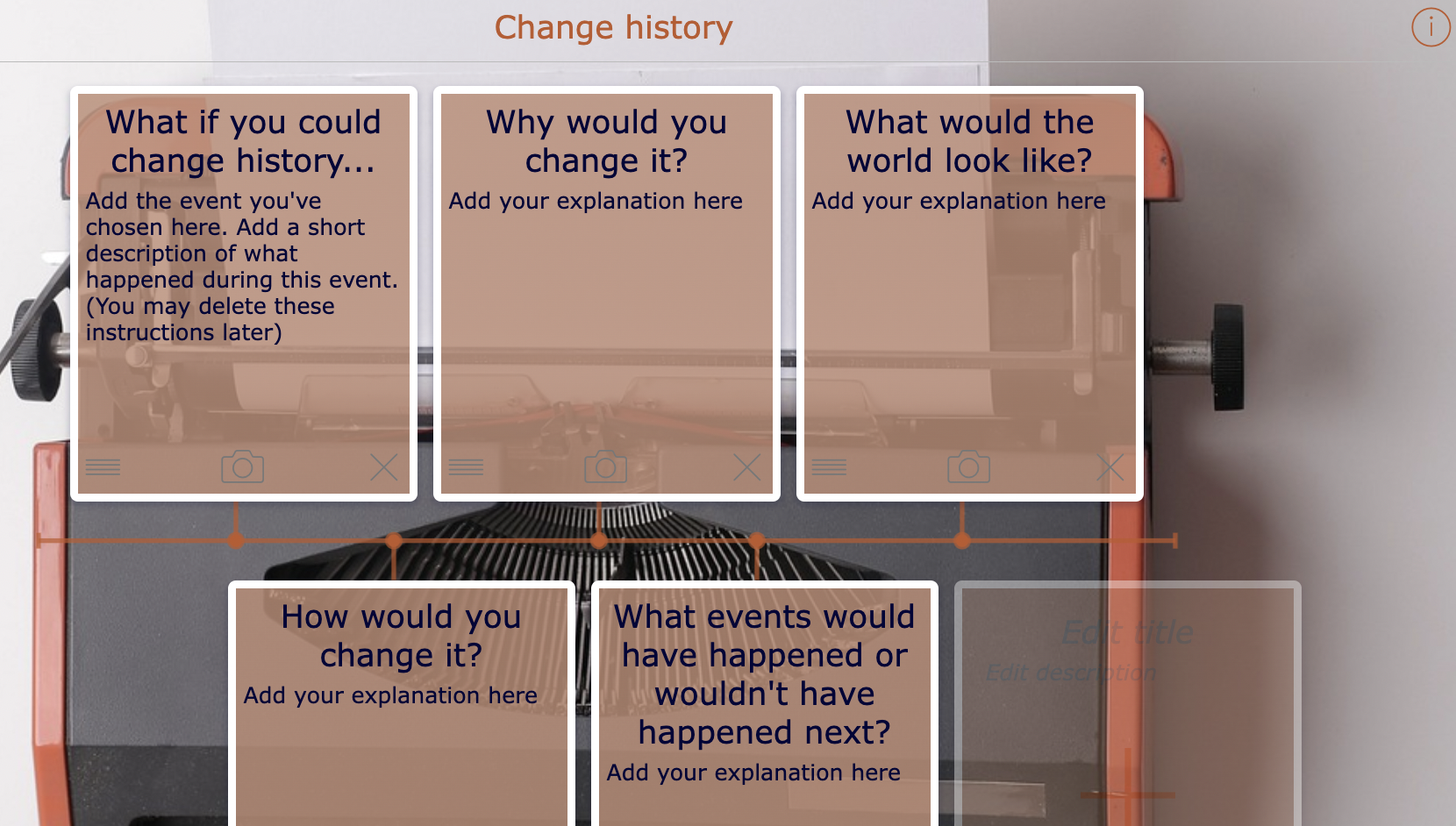
STEM
22. Identify problems and create solutions
This timeline allows the students to demonstrate their knowledge of an experiment.
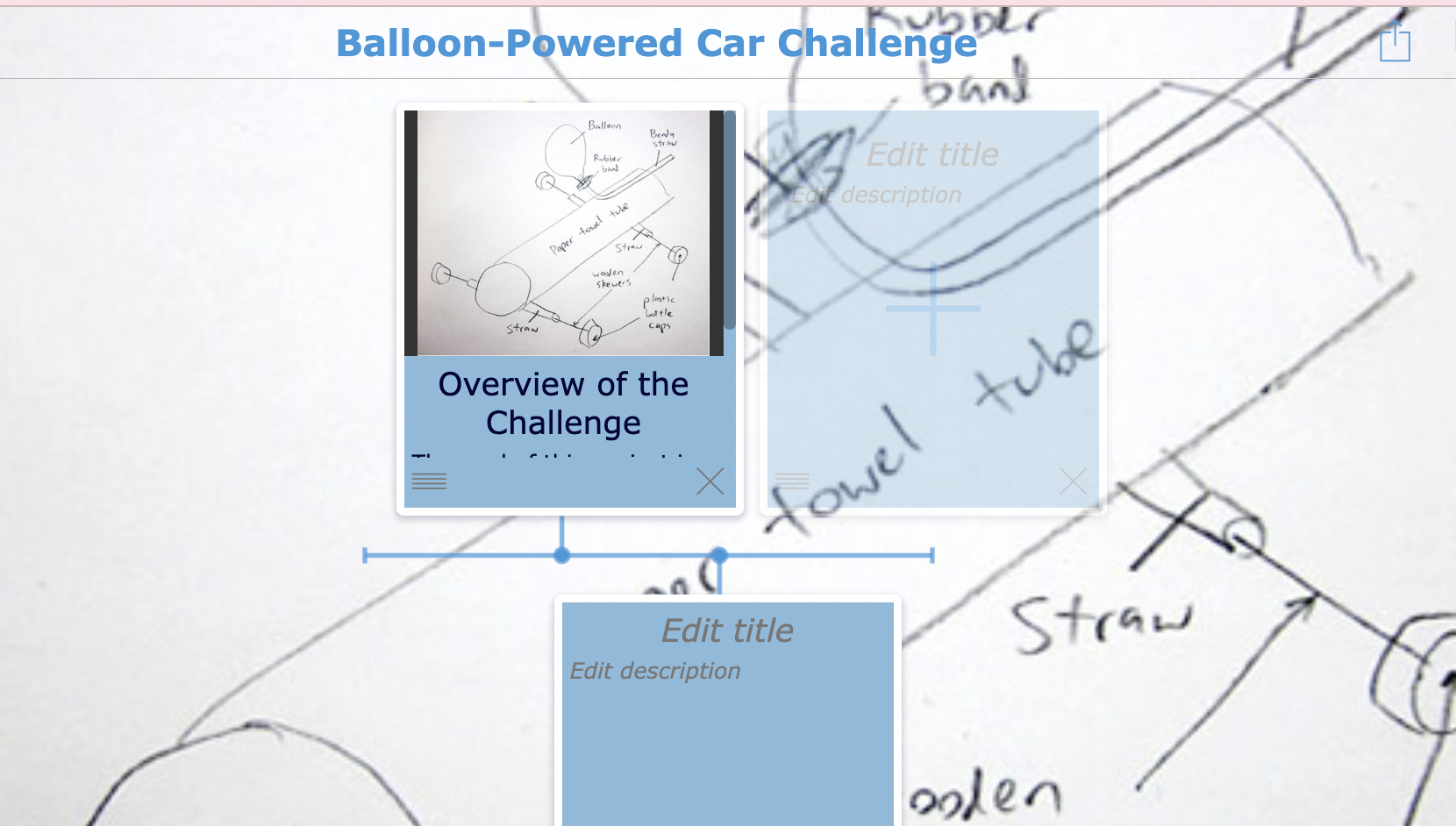
23. Scientific method, steps in a process
This timeline is great for demonstration of understanding scientific thinking.
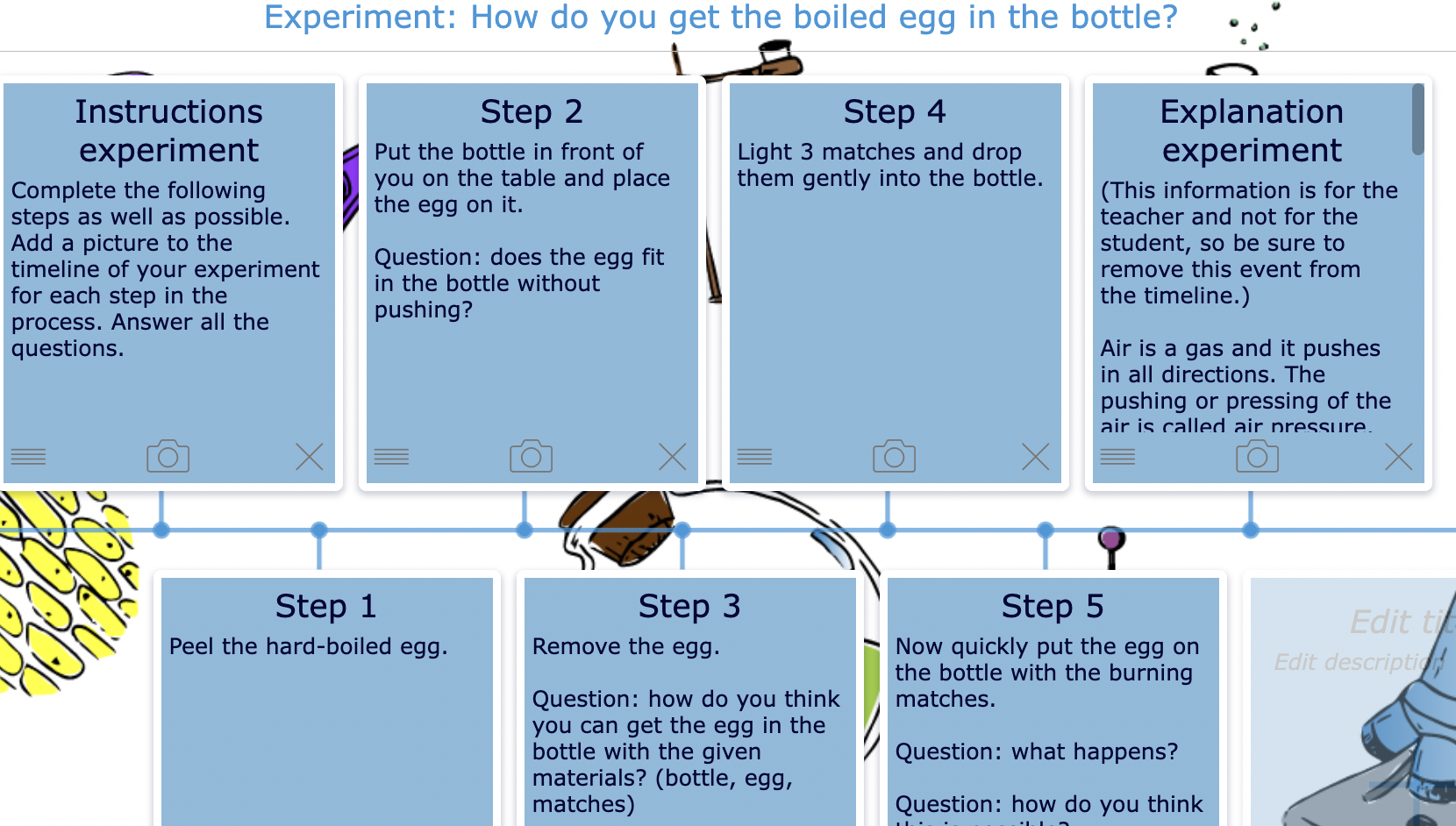
24. Biology
Use this timeline for understanding the life cycle of a butterfly. This fixed timeline can be used as a review before an assessment.
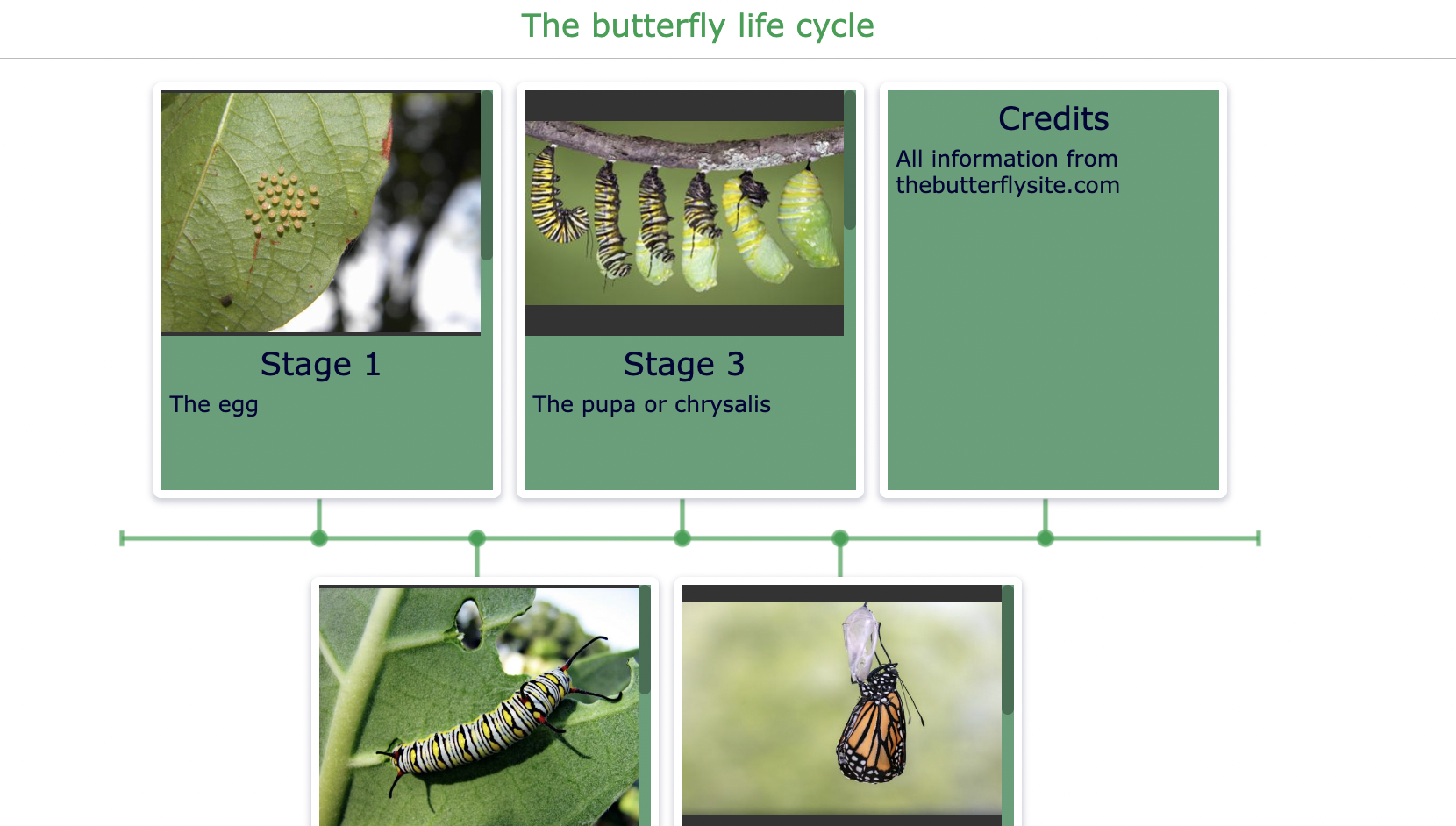
25. Infographic
Use a timeline to create an infographic. Students can review important events and dates and create an infographic to enhance understanding. This timeline showing illness and death for the Spanish Flu and Covid has data perfect for creating an infographic. Allow the creativity to flow and get started creating an infographic.

26. Integer Timelines
Integers surround us in our everyday life. Sea level, speed limits, sports, music, money are all composed of integers. Use an integer timeline to show distance traveled or money earner over time. Here is an example of cash flow over time.
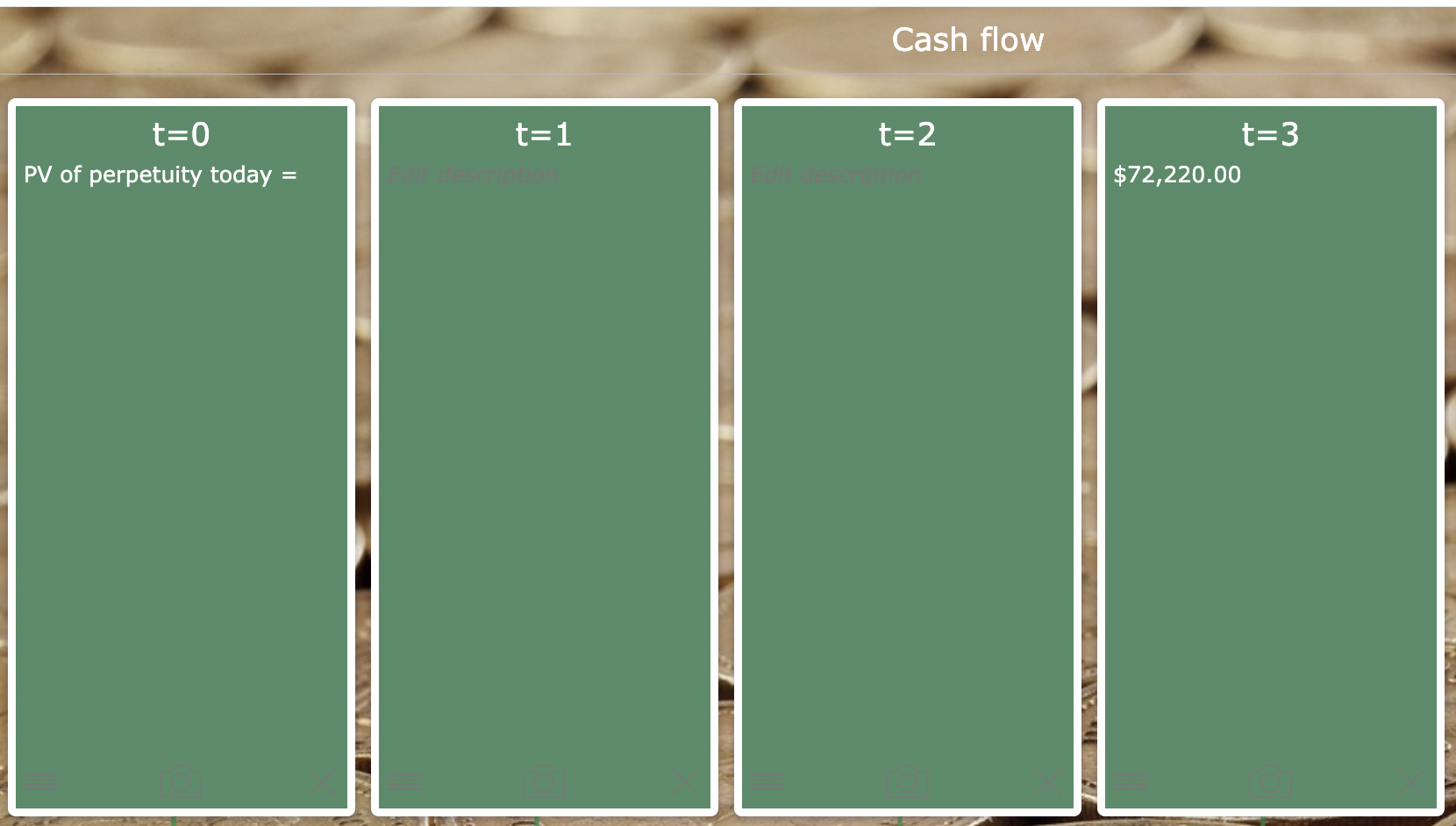
27. Cause and effect
This timeline asks students to understand cause and effect as it relates to the process of river formation.
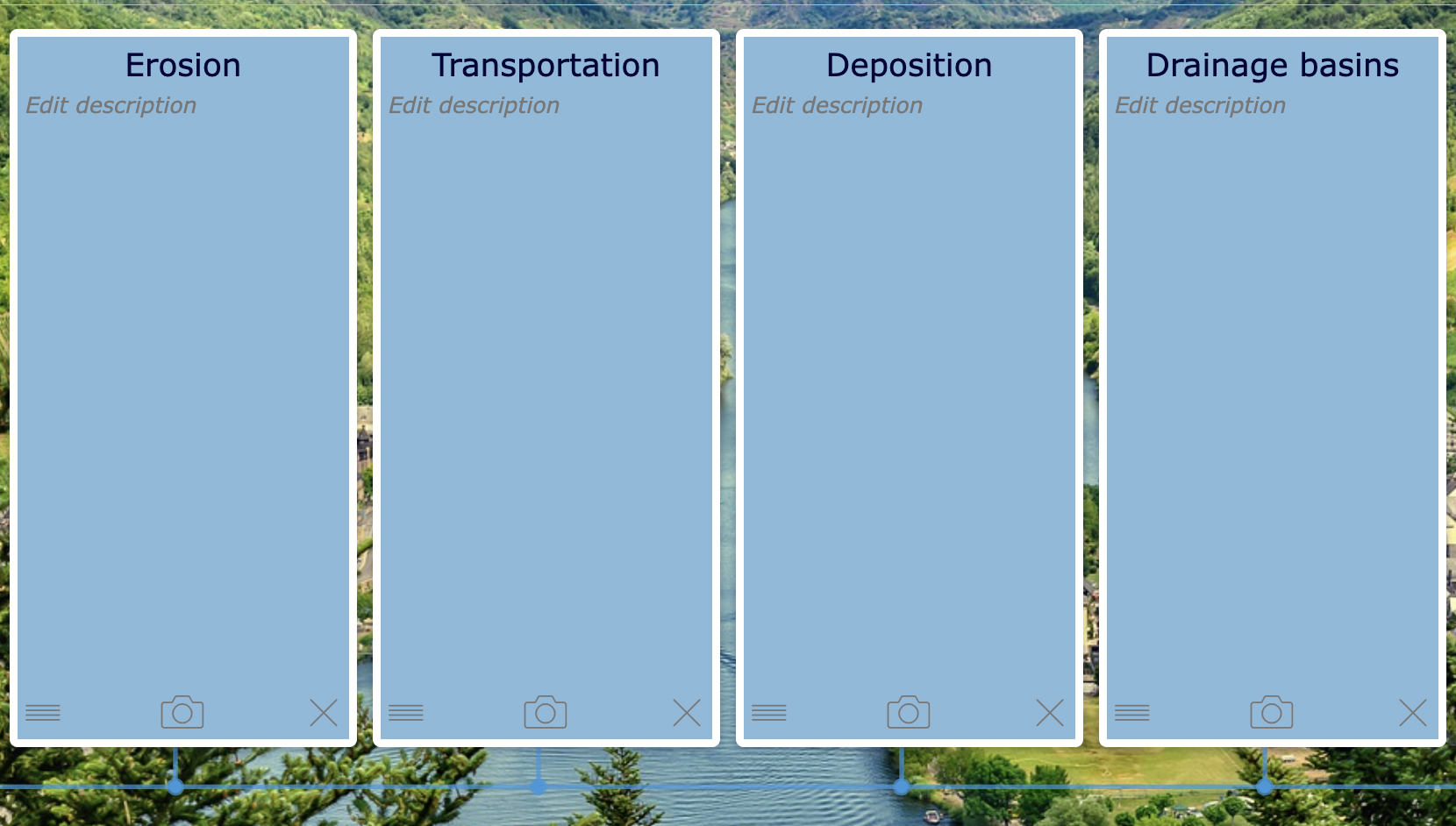
28. History of math (Pi)
Let’s have some fun with math and use this timeline to learn about the History of Pi. Perfect for Pi Day on March 14th.

29. Another take on note taking
In this example from a biology class, we use a timeline to help students organize the note taking process over time.
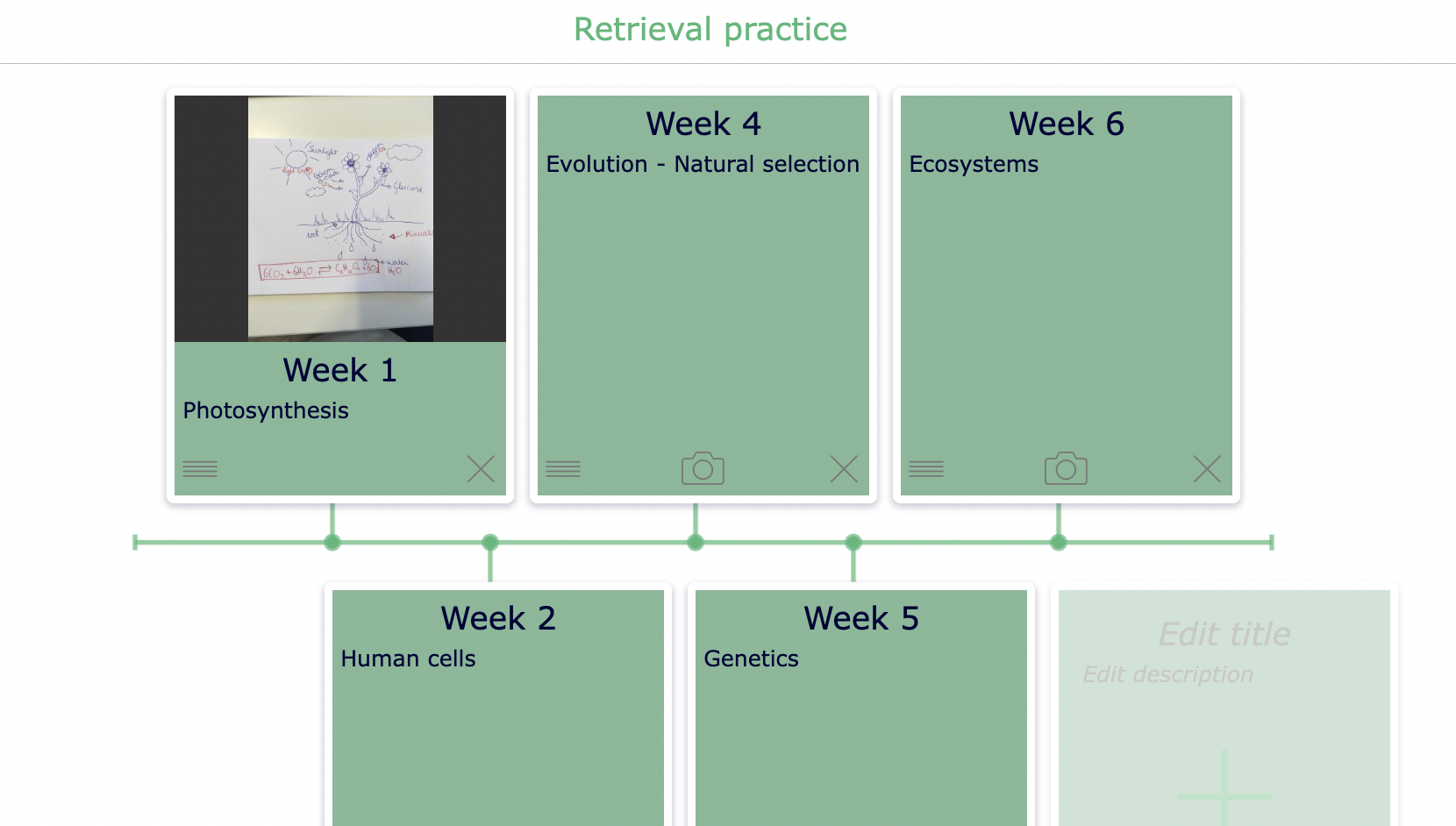
Miscellaneous
30. Important days in the year
Have some fun placing these Star Wars movies in correct order according to the Star Wars storyline. May the 4th Be With You!
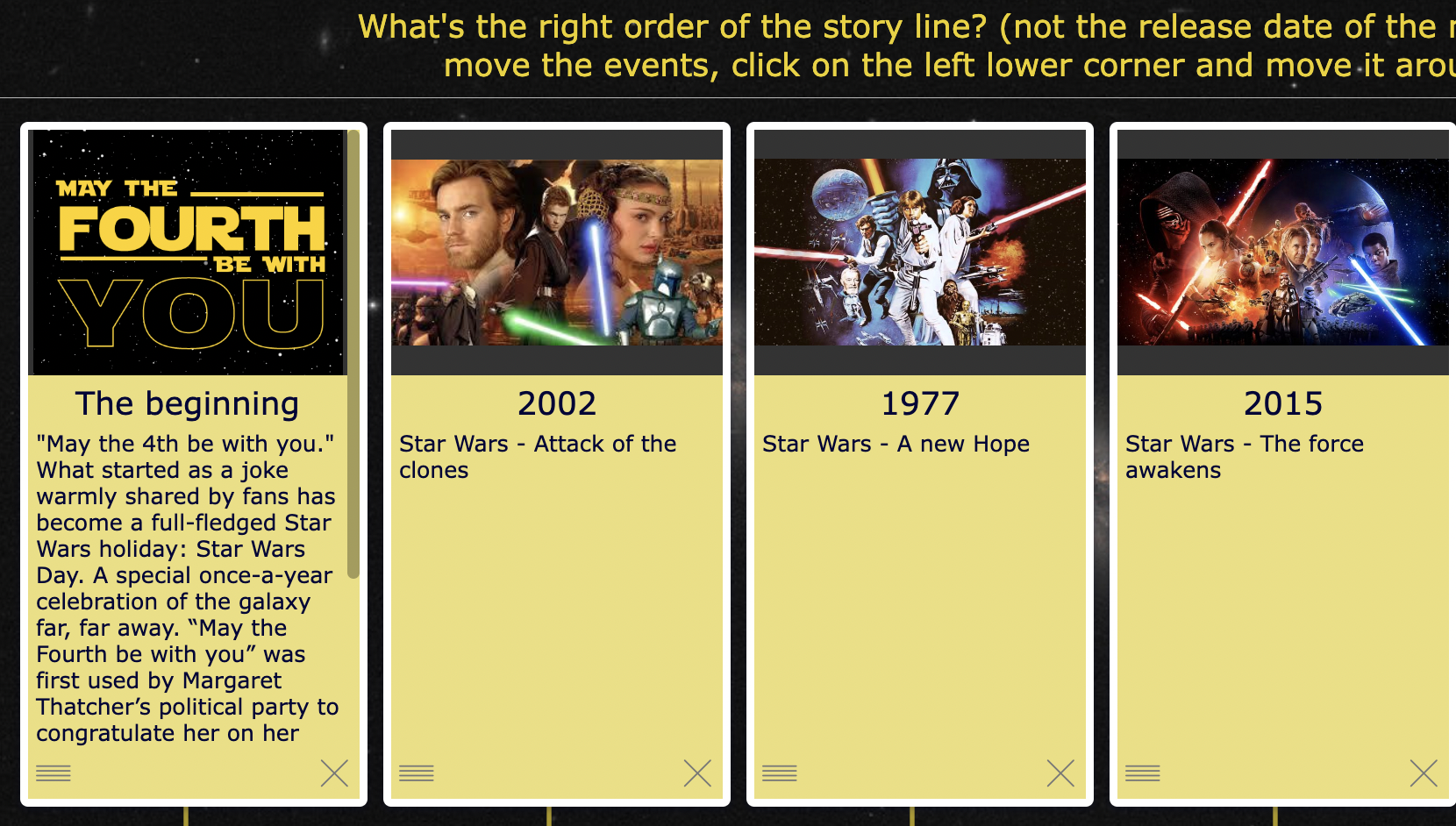
If you are looking for some fun days to celebrate with your students, check out our Awareness Day Widgets.
31. Cross curricular connections
Understand the link between art and history using this artistic historical era timeline.
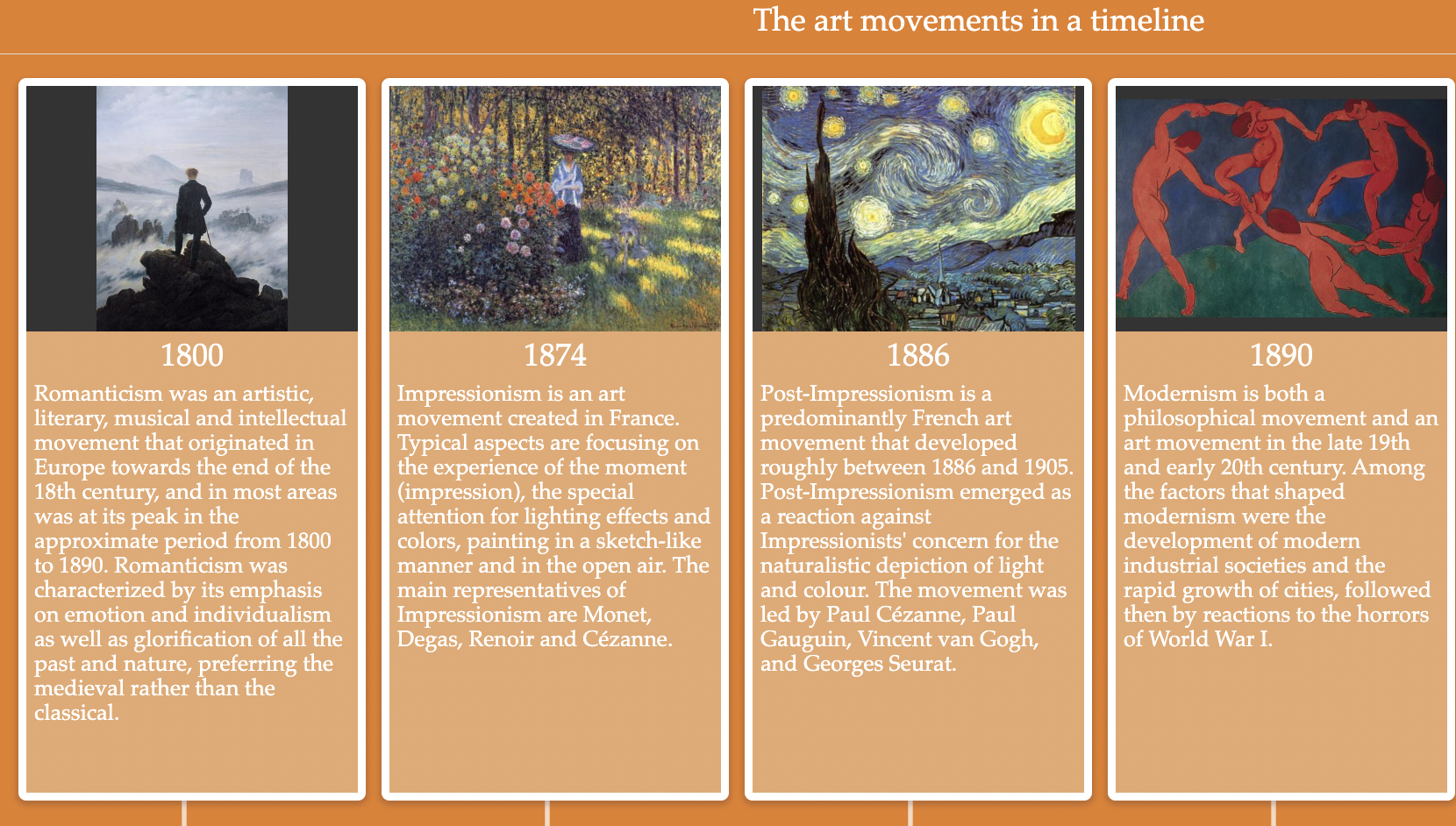
32. Field trips
No more unruly or bored students - use this timeline activity to guide students during a field trip. This customizable timeline guides students as they navigate the Louvre Museum.
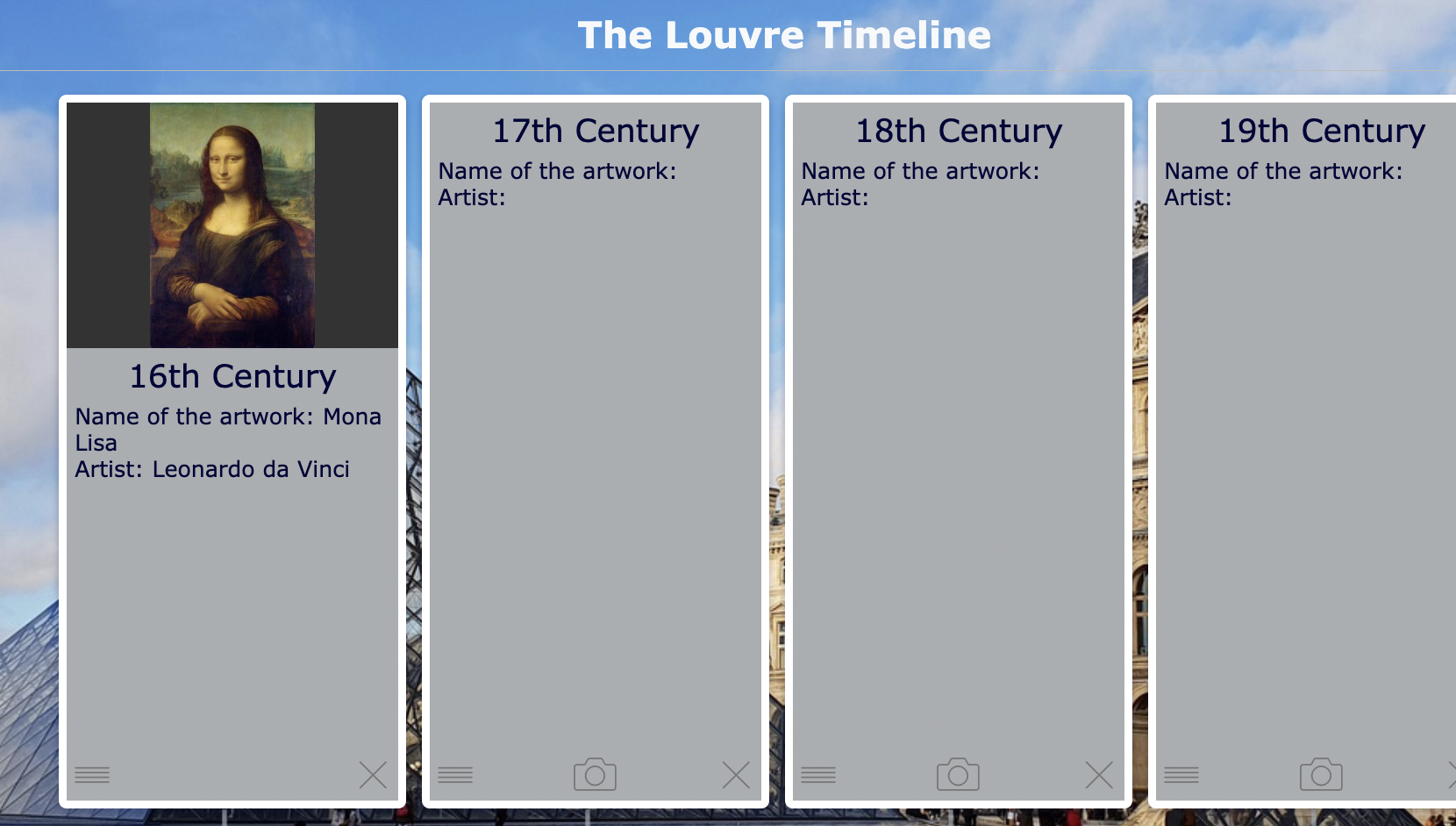
33. Project Based Learning
Long-term projects and deadlines can make some students anxious. Create a visual timeline with embedded links. The visuals allow for ease of understanding with the extra information out of sight so the project is not so overwhelming at first glance. This example helps students stay organized on the first day of school. Information overload is real and this widget will definitely help students start off the school year great.

34. Agendas
Use a customizable timeline - the teacher provides the backbone, students customize. This example uses a note taking and exit ticket timeline.
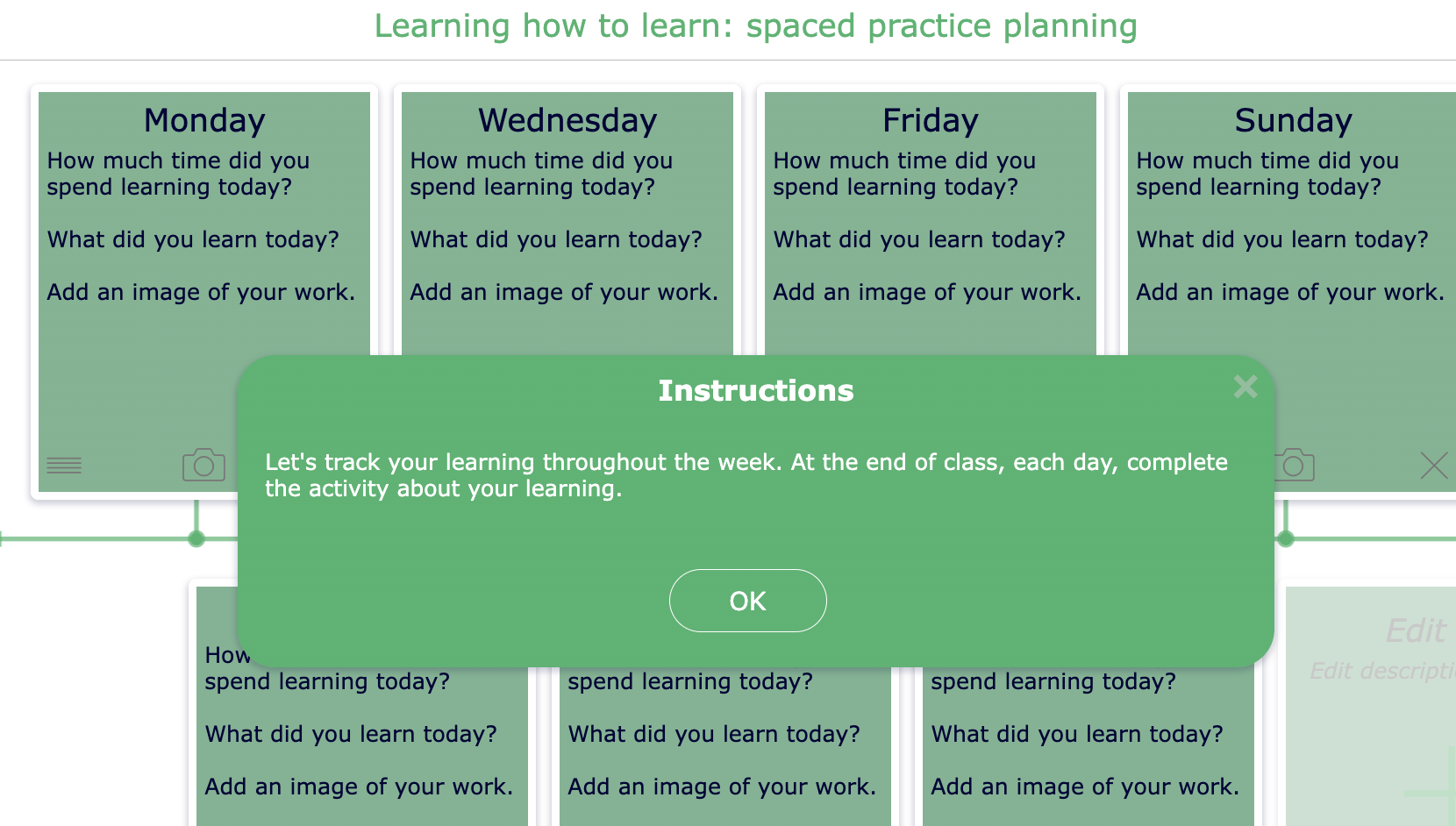
This diary/tracker timeline allows the student to create a personal timeline showing how they improved or learned over time.
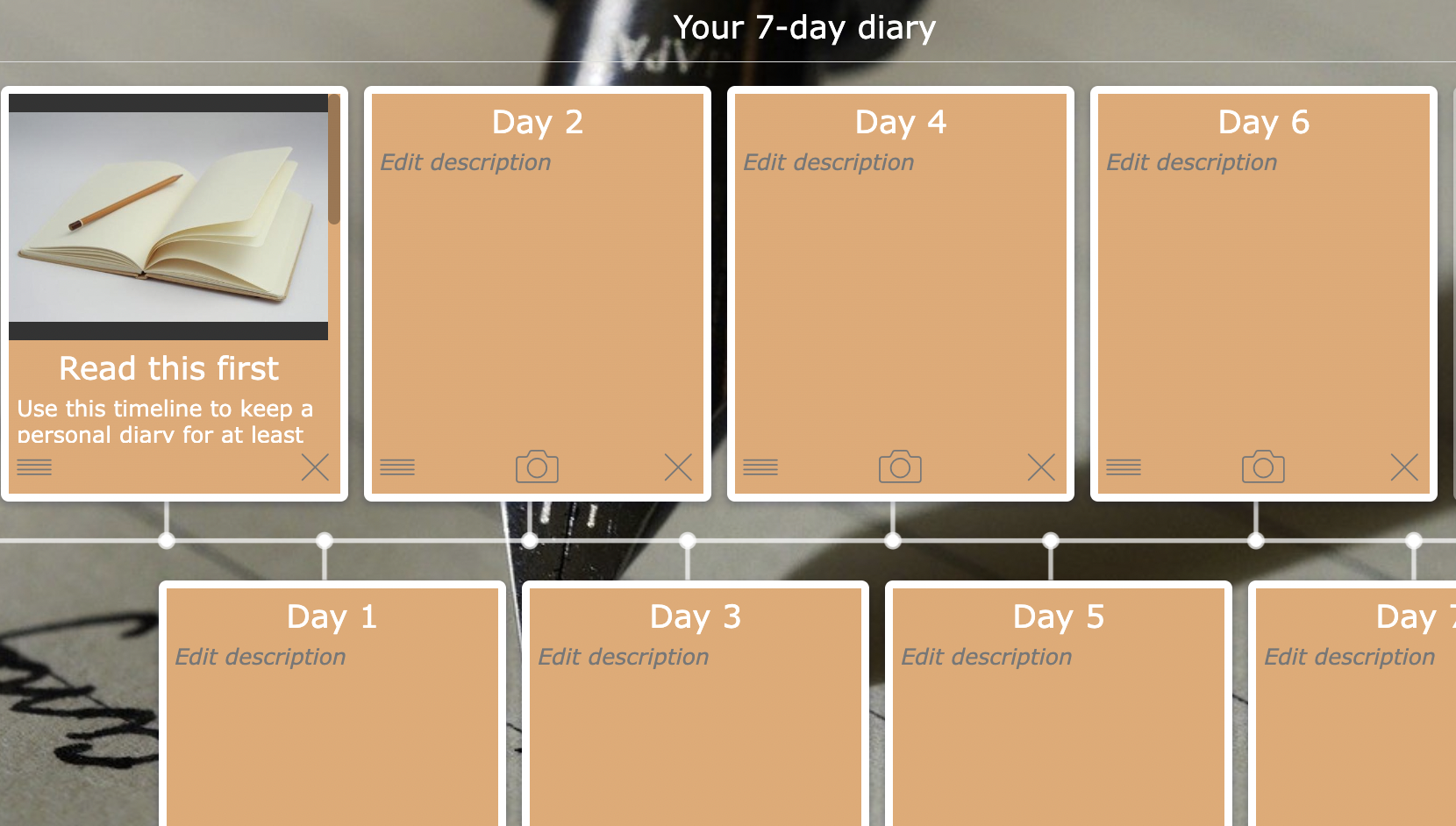
36. Organizer
This is a unique way to keep a group/individual project on track, or provide structure for a field trip: This timeline project tracker example can be customized for your specific needs.
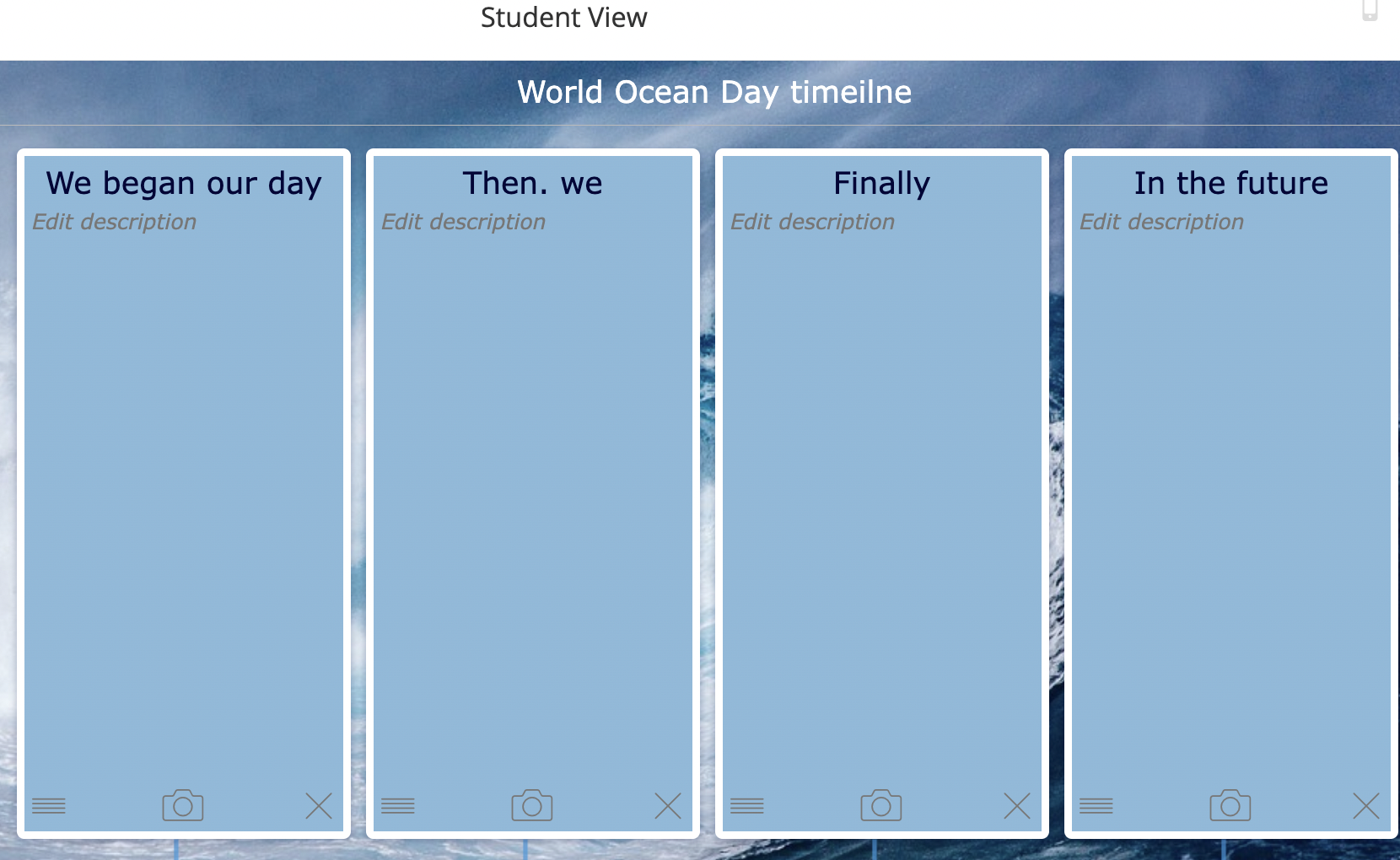
37. Growth over time
A modern Day KWL (Know, Want to Know, Learned) organizer. This timeline is a great way to show evidence of learning or growth over time. Use a customizable timeline of events over a year in class (or individual) students will be amazed when they take a look back and see all they have accomplished.
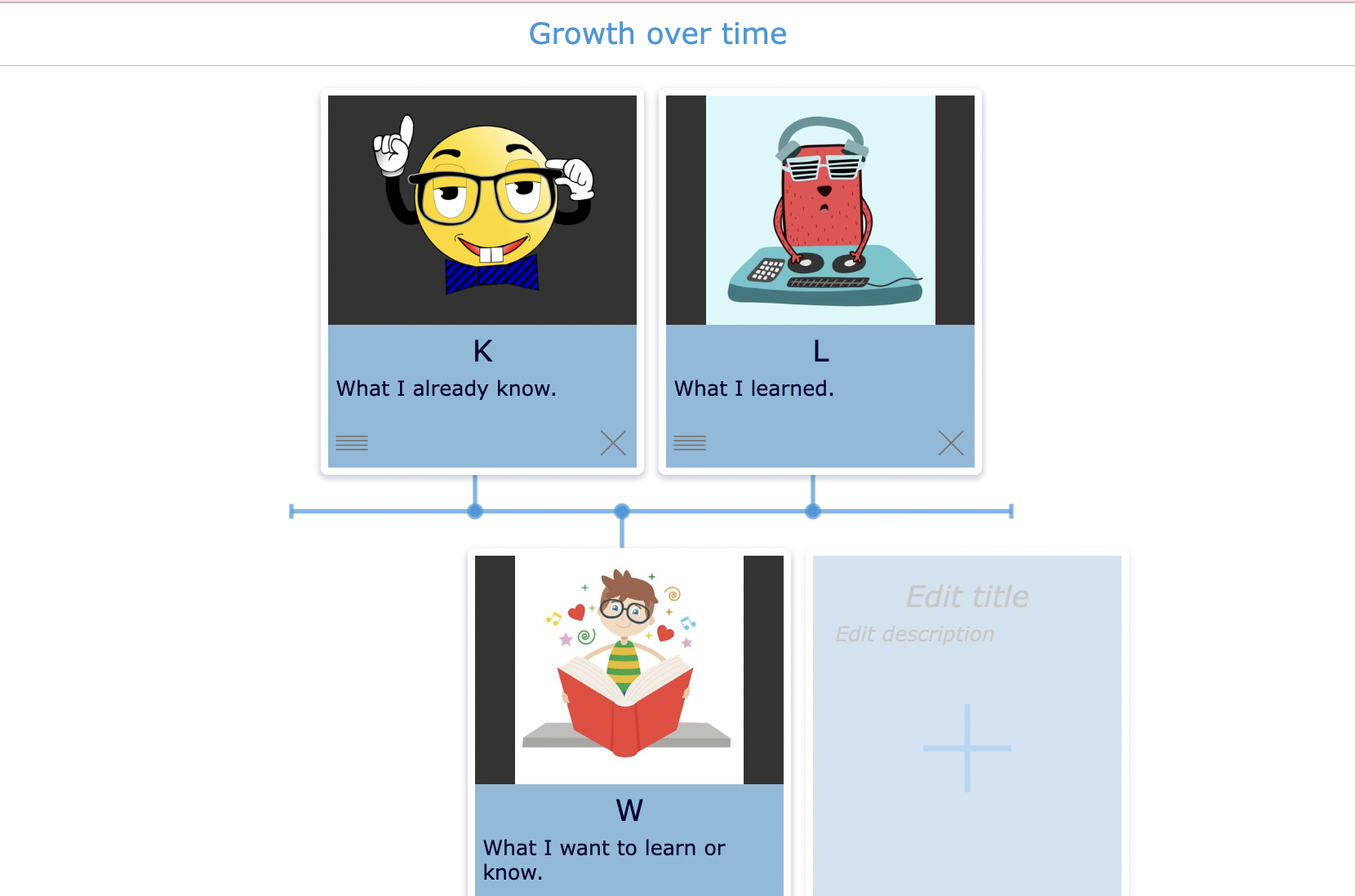
38. Visual summary
Help students follow along by providing a timeline as a visual summary for a lesson or concept. In this example, the timeline focused on the major characters in Romeo and Juliet. Students may use the area below the images to take notes.
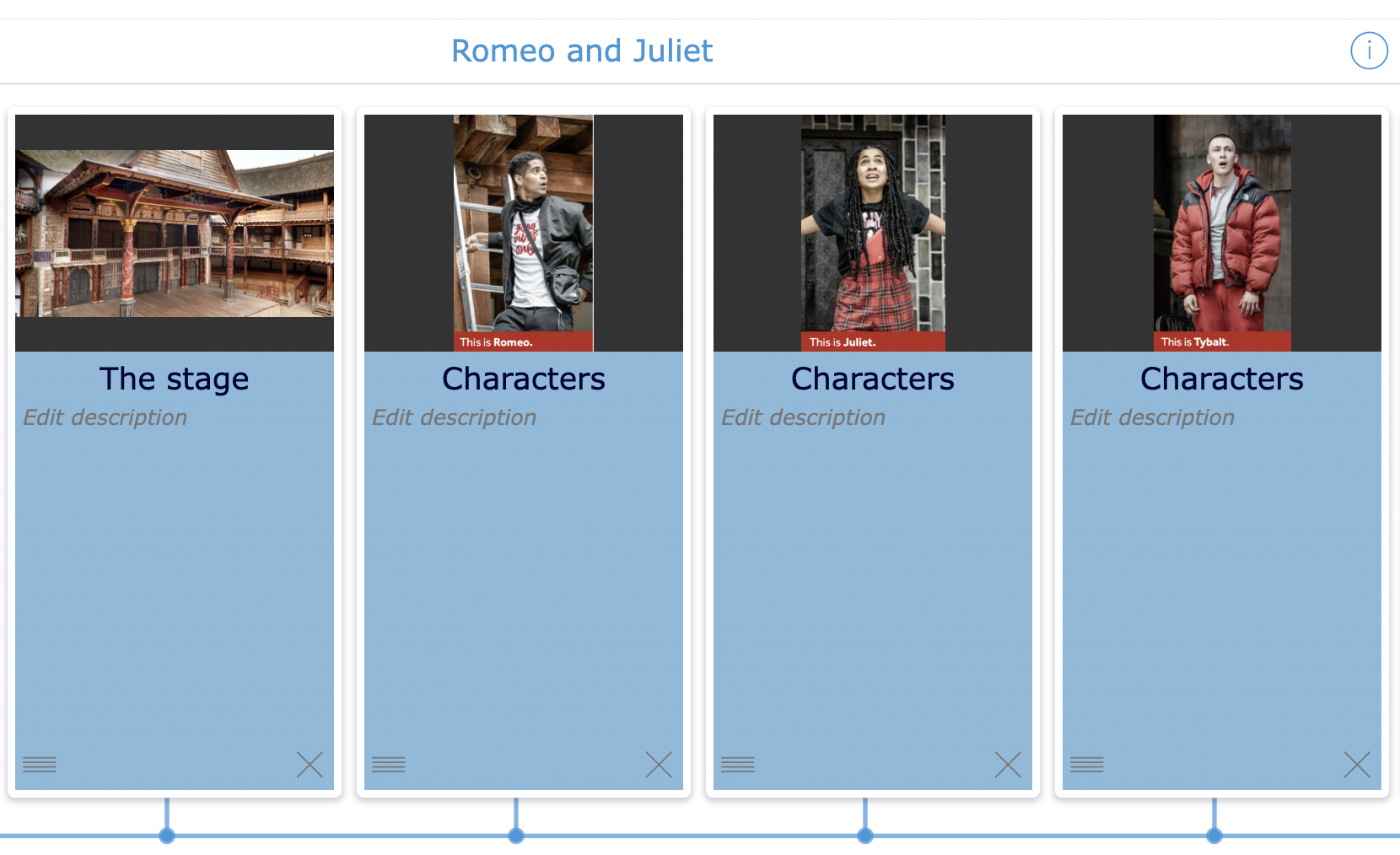
39. Review
Review at the culmination of a project or end of a lesson. This example uses life cycles and scientific information using a timeline as a guide.
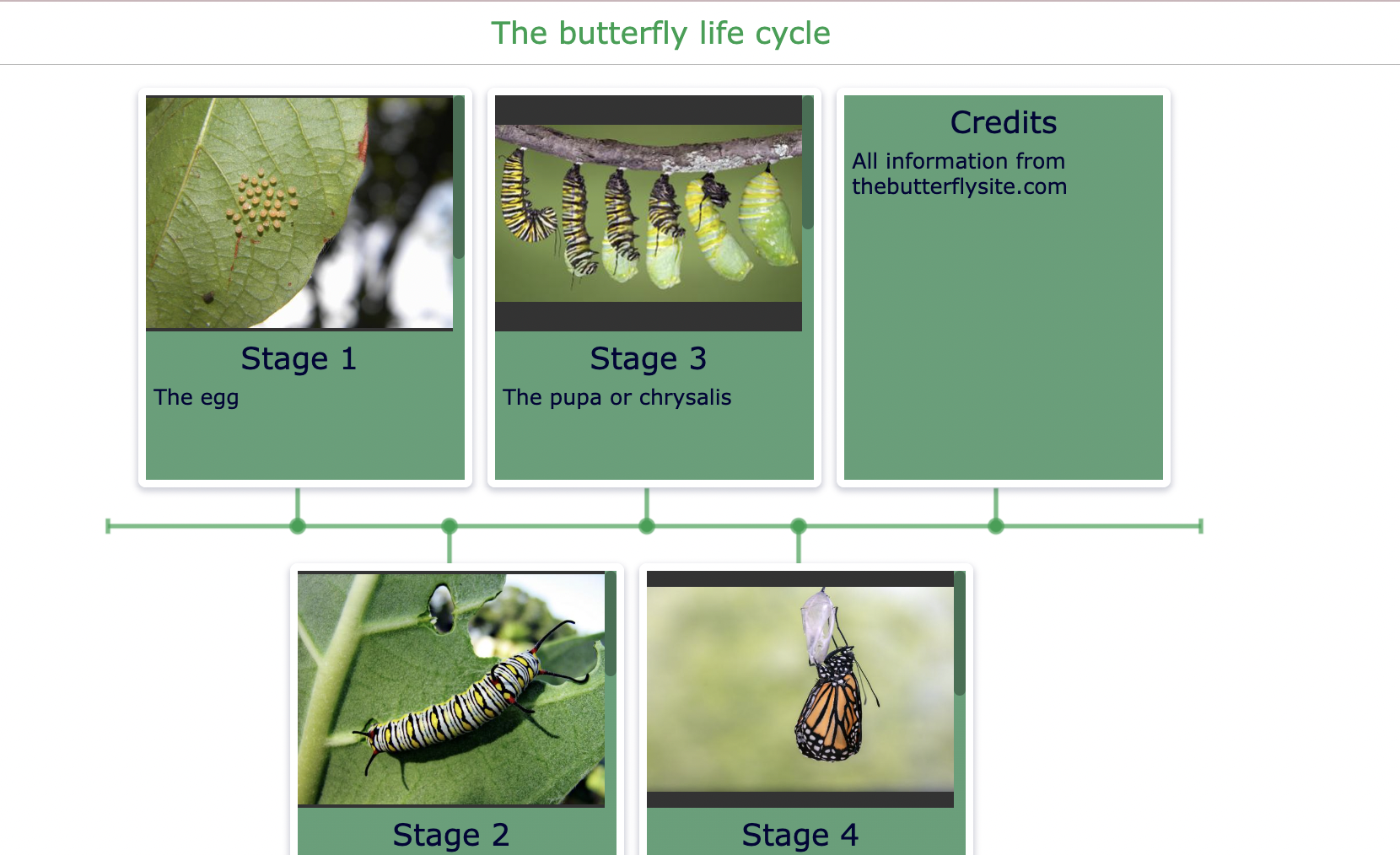
40. Engage even the youngest learner
For younger students, drawing might be a great way to demonstrate understanding. Use a whiteboard widget to show steps in an experiment or key points in a story: first, next, last. Use the drawing tools instead of the keyboard to enter the information or data.
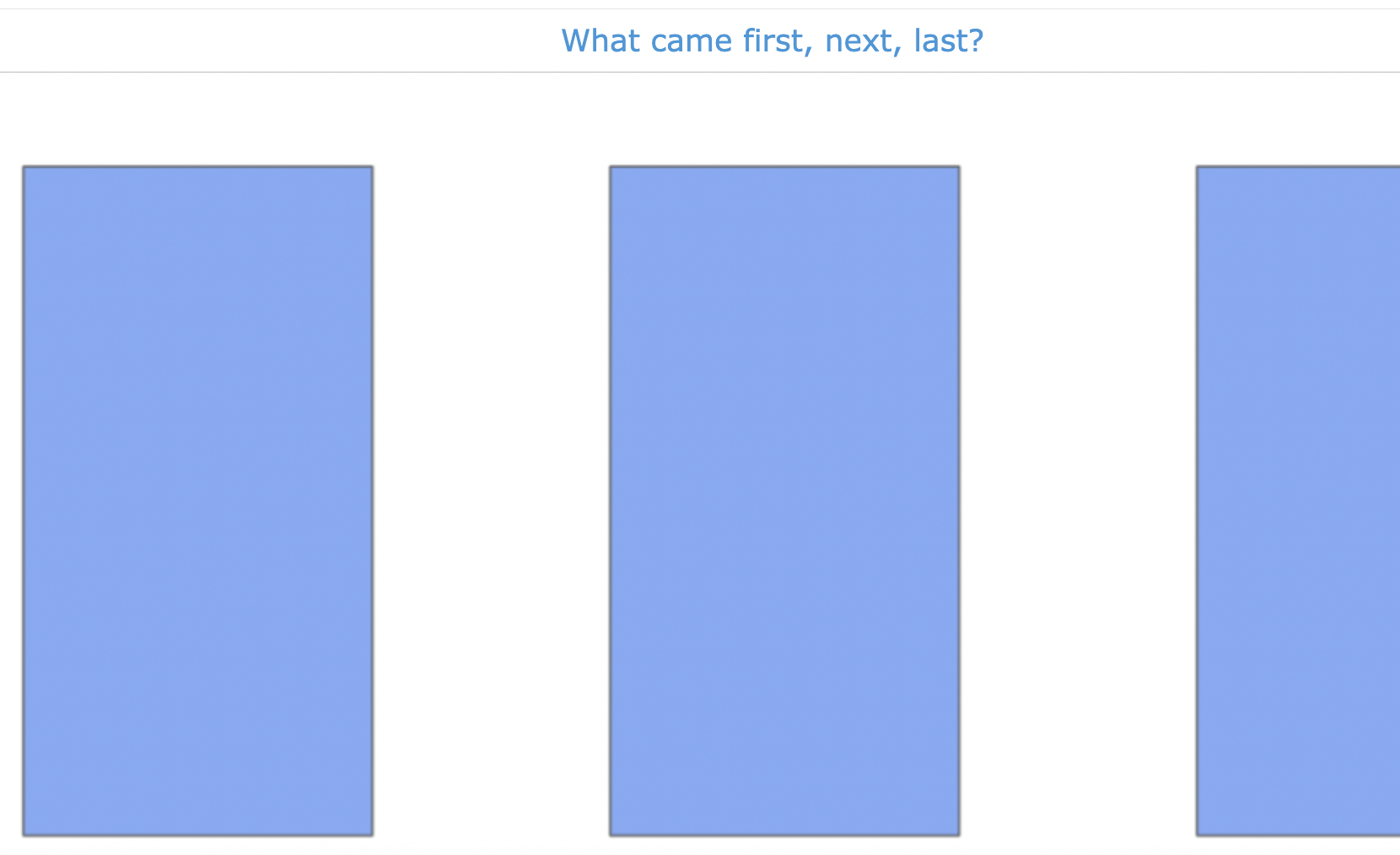
How to create an interactive timeline from scratch using BookWidgets
If this is your first time on our blog, you’re probably wondering: “What is BookWidgets?”
Here you go: With BookWidgets, teachers can create over 40 interactive exercises (like a timeline) and auto-graded assignments with over 35 different question types. All teachers from all courses can use BookWidgets. Teachers can easily integrate BookWidgets inside Google Classroom, Microsoft Teams, and many other Learning Management Systems. The integration enables teachers to follow student progress in real-time when they are working on a BookWidgets assignment. This way, teachers can quickly guide their students in the right direction when they need help. BookWidgets is being used by teachers all over the world for daily activities, asynchronous work, and both summative and formative evaluation. The grading dashboard allows teachers to review student work efficiently and easily give comprehensive feedback.
From scratch
Now that we have some ideas on different types of timelines, let’s create one from scratch using our teacher content creation tool - BookWidgets. BookWidgets provides you with the timeline template, you can use your backward design and goals to create the ultimate timeline for your students. The Timeline template is located in the Test and Review template section of BookWidgets.

Give your timeline a title.
Decide if the students will be able to edit the timeline. For example, if students are explaining the chronology of a story, you will want to select an editable timeline. However, if the timeline is a visual summary for students to follow during a demonstration or lecture, you will want to select a fixed timeline.
Provide instructions for the students.
Add events - provide a date or event name and then add a description. Describe the event in a Fixed timeline, or ask your students a question they have to answer when you choose the timeline to be an editable one.
Customize the events section with images to further engage the students
Enable submitting of answers, in this case, the timeline if you want the students to send their completed timeline to you.
That’s it! You have completed making a timeline from scratch. Now share this with your students or a colleague.
⚠️ NOTE: Unlike other widget types, the timeline widget doesn’t get automatically graded. If you want your students to put events in the right order, you have to scramble the events on the timeline from the start. BookWidgets will not do this for you.
Use the existing timeline examples
Don’t forget to join our BookWidgets Blog group to see all the awesome activities that we have shared in this post with you. You can select all the activities and duplicate them to “My Widgets”. This way, you can adapt the exercises for your language or course. Are you new to BookWidgets? First, you’ll have to sign up for a free BookWidgets account to get these timelines and so much more. With an account you will be able to edit and customize the activities for your students. Then, make sure you navigate to your BookWidgets dashboard and join this group. You will find all the ready-made timeline lessons waiting there for you to use.
Conclusion
Now that you have ideas for creating engaging digital timelines in hand, you are ready to think about how you want to use one. 📆 Keep this tutorial handy as you create. It has guided steps.
Remember, sharing is caring - maybe you have the perfect Timeline widget - don’t hesitate to share your creative widgets by posting them in this Facebook Group. If you are not a member, join now. We are looking forward to seeing what you share and create. My hope is that you found some innovation, inspiration, and imagination in this post. Which of these ideas is your favorite? 🤩 Let us know on Twitter @ibookwidgets.
Continue to be awesome. 🎉 Let’s Learn Together! 👩🏻🏫 ~Sheryl

